21:19 – xx:xx
Palomar 10
Angle 139.520
LRGB taken, the first set were fine then the dome closed but SGPro kept on imaging as I forgot to set the safety, so I will need to dispose of a number of images.
21:19 – xx:xx
Palomar 10
Angle 139.520
LRGB taken, the first set were fine then the dome closed but SGPro kept on imaging as I forgot to set the safety, so I will need to dispose of a number of images.
22:00 – xx:xx
Quick look at the Bat nebula given there is a break in the clouds. I had trouble with a guide star due to as hot pixel so I had to move the scope slightly to move the guide star. I need to take a some new darks for the off axis guider.
I tried 2 regions within the Bat nebula given its size, but neither showed any signs of nebula on a single 10min exposure.
I then tried Lynds Dark Nebula, LDN 1082 The Seahorse. |However again due to the expanse of this object a small portion was only available in the 12″ so again this will be more suited to the Esprit.
I then went for Palomar 10, a Globular cluster in Sagtta.
22:14 – 00:52
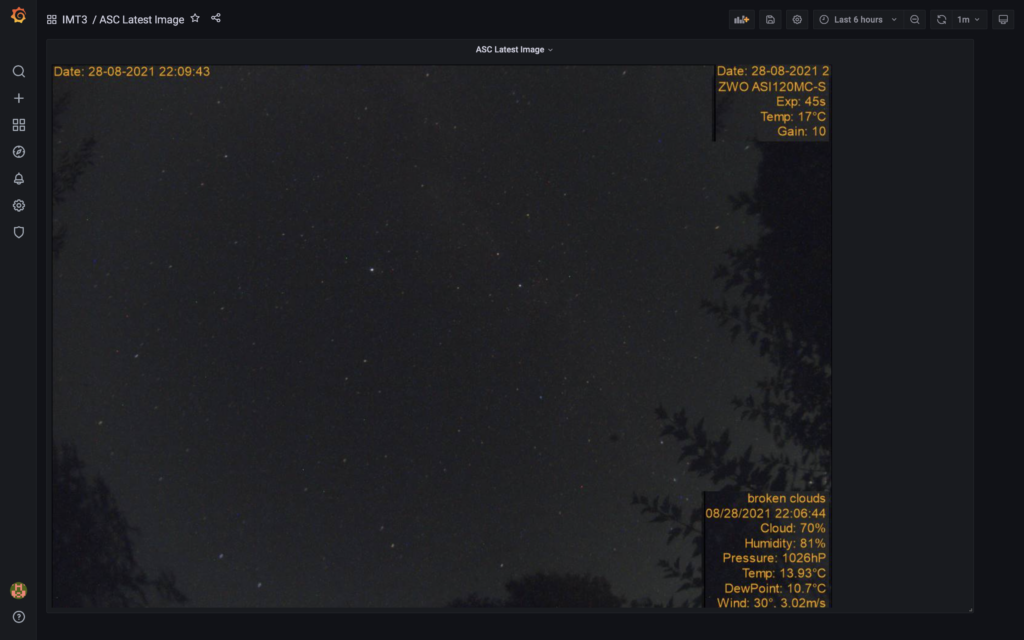
RGB on SH2 – 132.
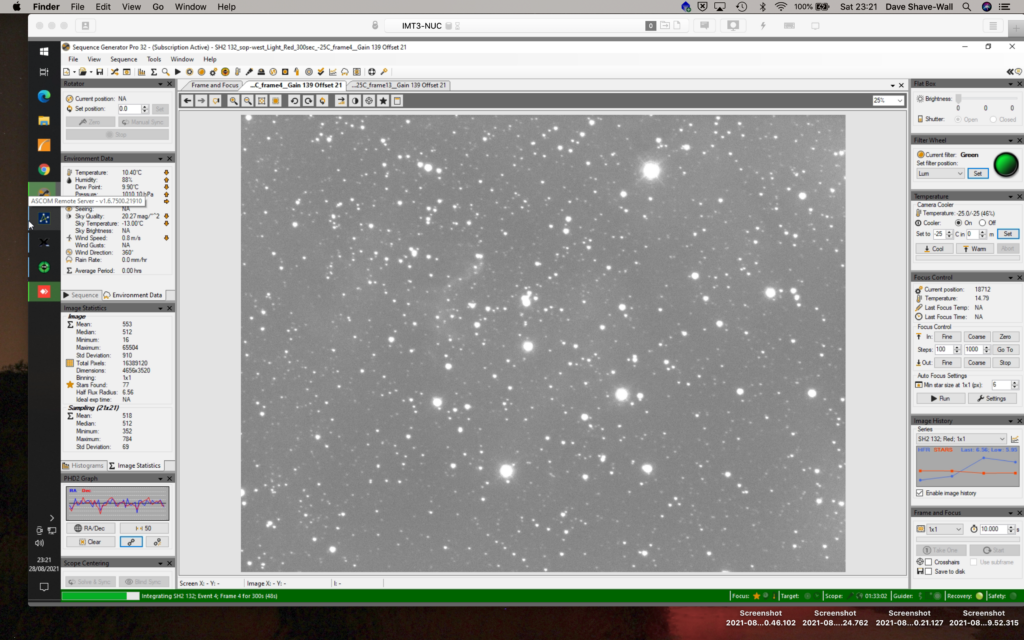
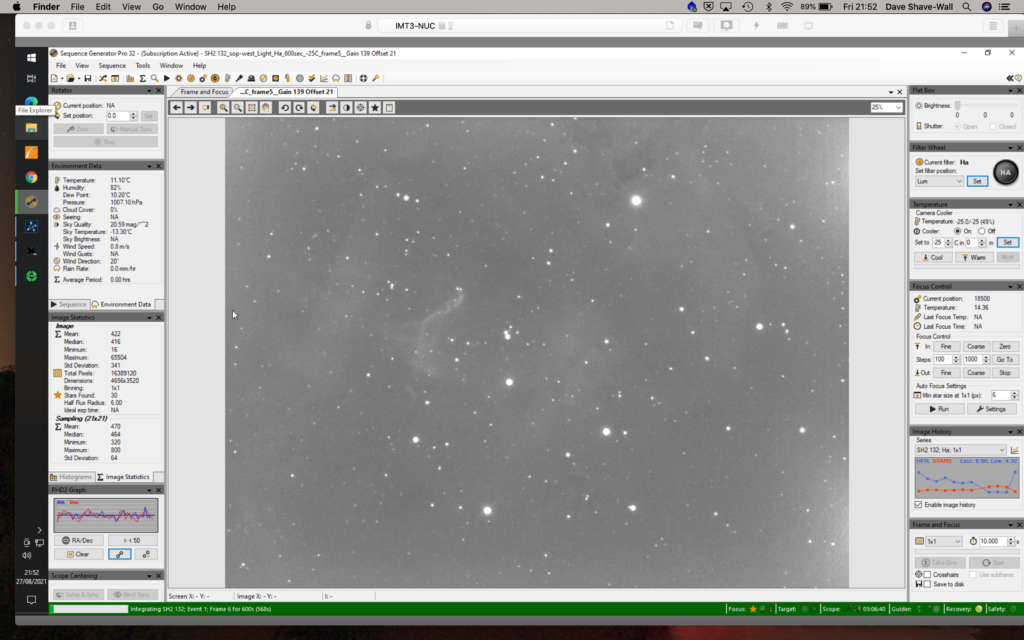
RGB focus 19,098, Temp -25℃ GAIN 139 OFFSET 21 , Rotator angle 256.020
Changed rotator angle to find guide star, must remember to force a calibration within PHD2 straight after so that the guiding works.

@ 00:45 LRGB on M15.
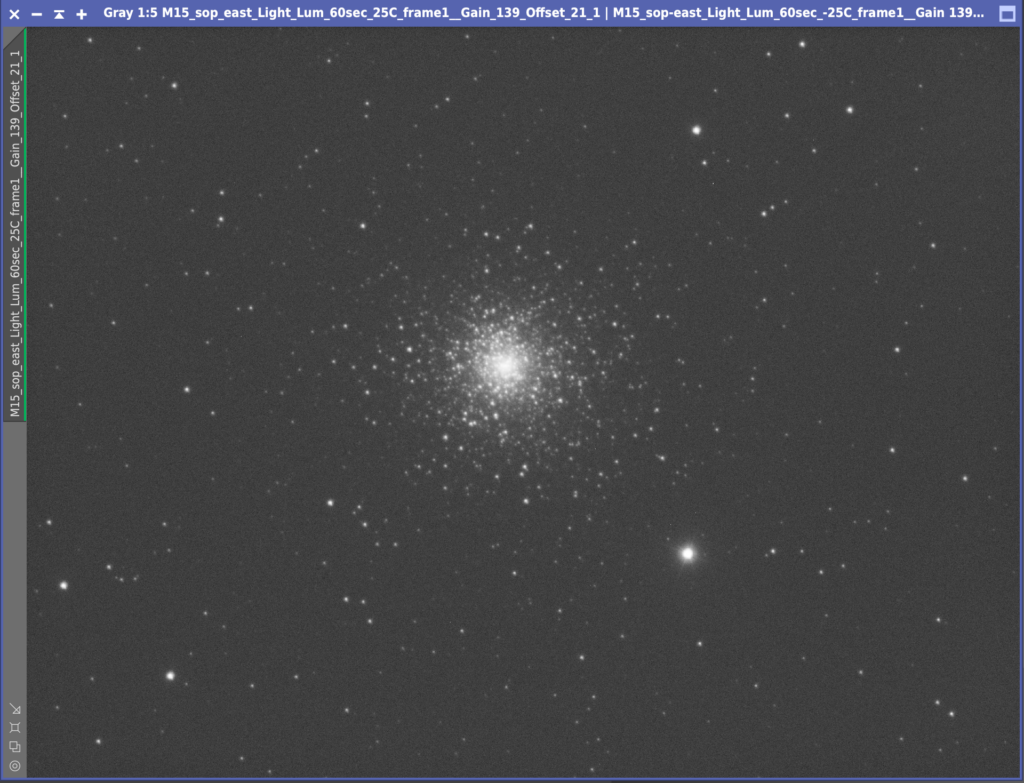
Lum focus 20,098, RGB focus 19,098, Temp -25℃ GAIN 139 OFFSET 21, Rotator angle 139.520
Left the observatory running at 00:52 and went to bed.
Forgot to set the Very Light safety limit so dome did not close when the Sun came up……

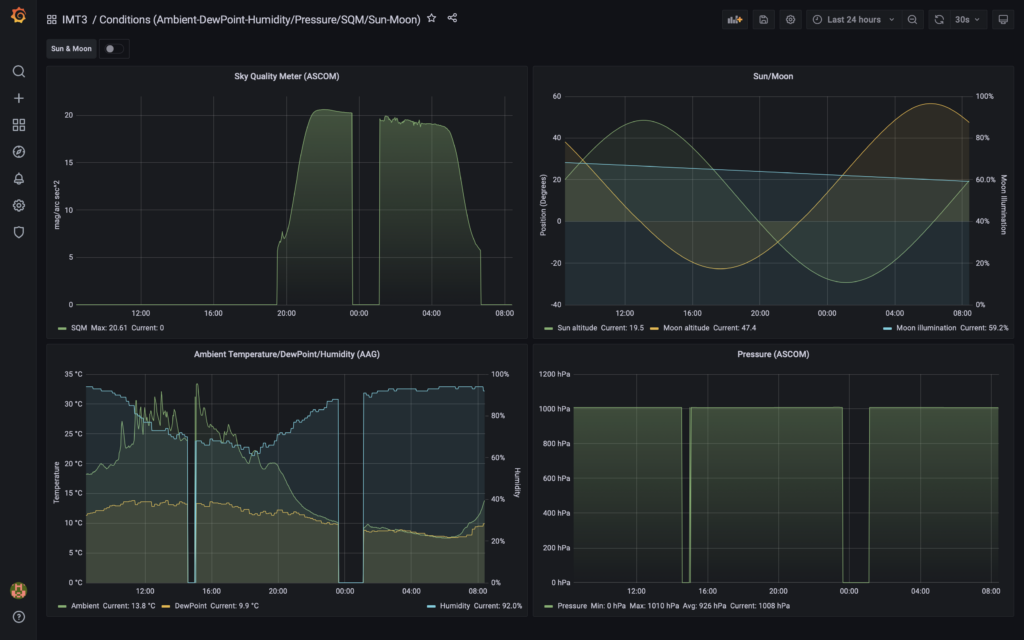
Need to do flats!!
22:00 – 04:00
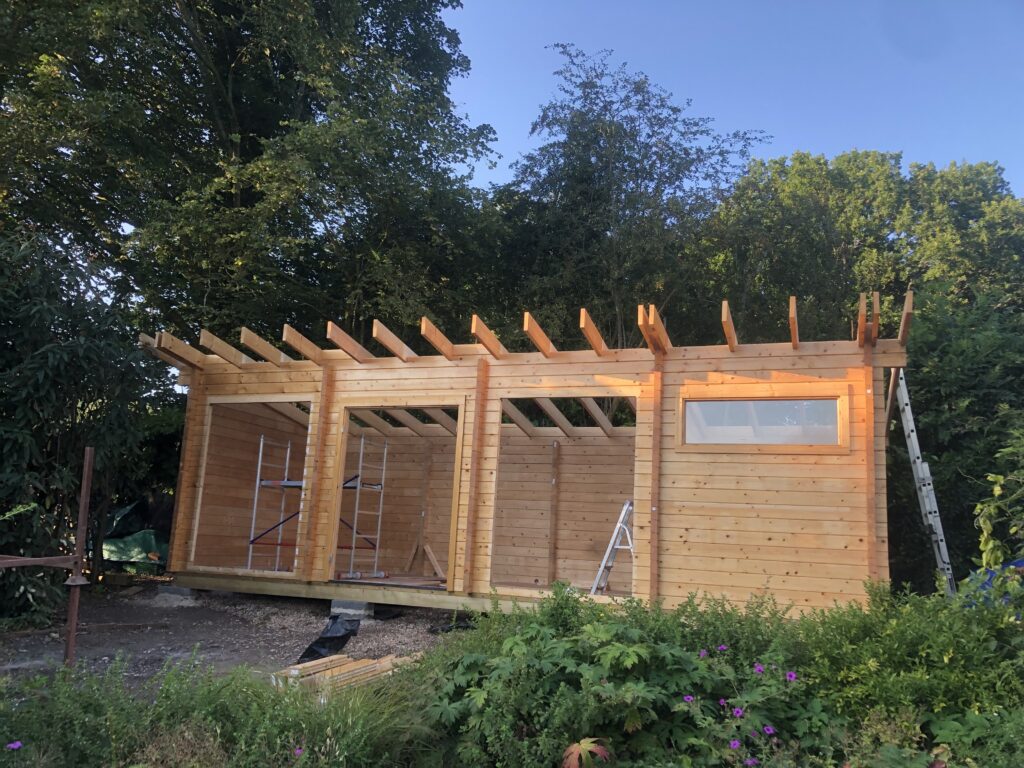
After a long day of building the new astronomy building with a few friends, I opened the dome on this clear night and start off by imaging SH2 132 until midnight for which I grabbed 18 x 600s Ha images at Gain 139 Offset 21 and temp of -25℃. I then switched to SH2 183 and went to bed.
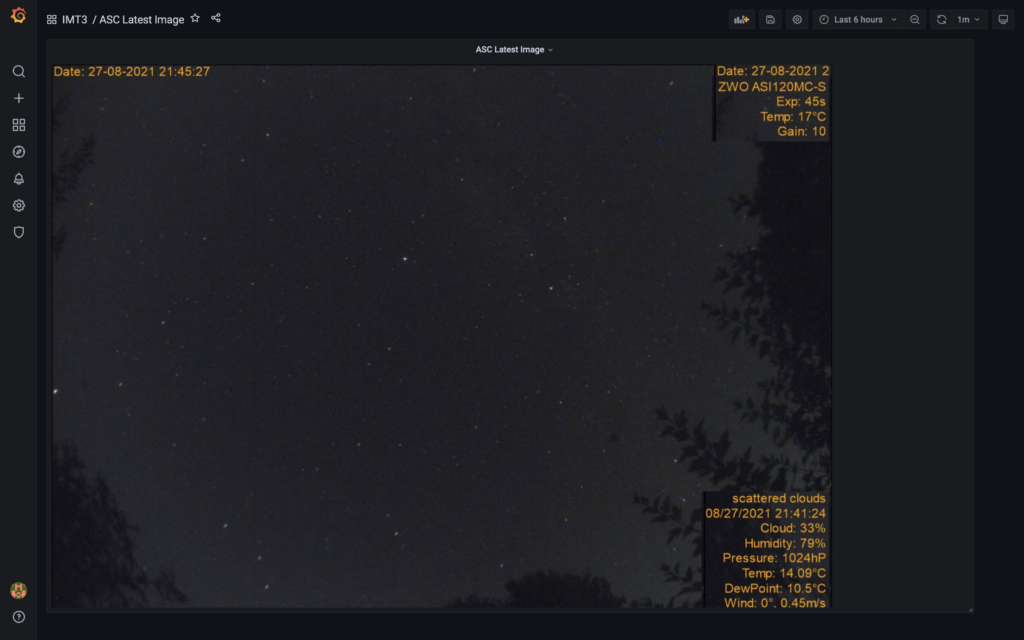
On waking this morning I realised I got 22 x 600s Ha images at Gain 139 Offset 21 and temp -25℃ before the clouds rolled in ands the dome shut around 4am. The seeing was particularly good as can be seen from the satellite image from skippy sky.com
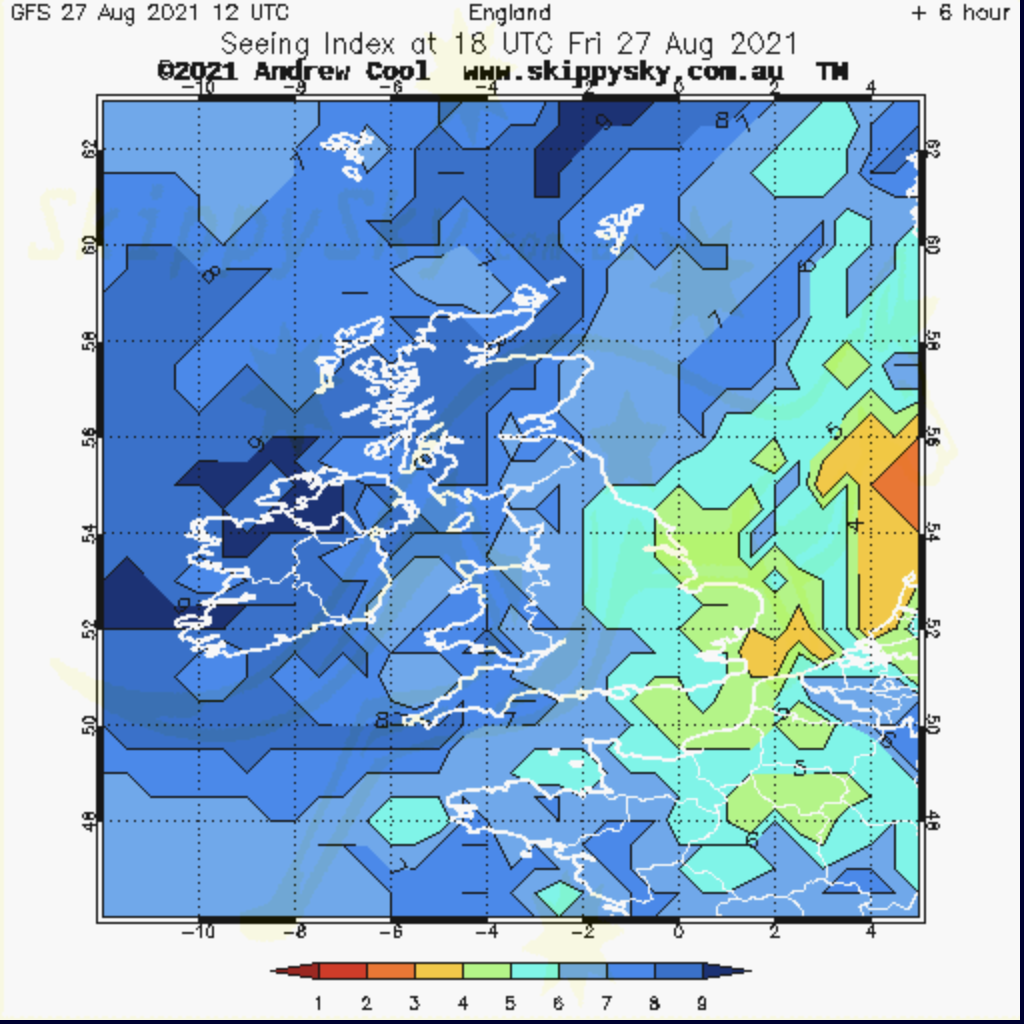
19:32 – 22:54
Opened dome.
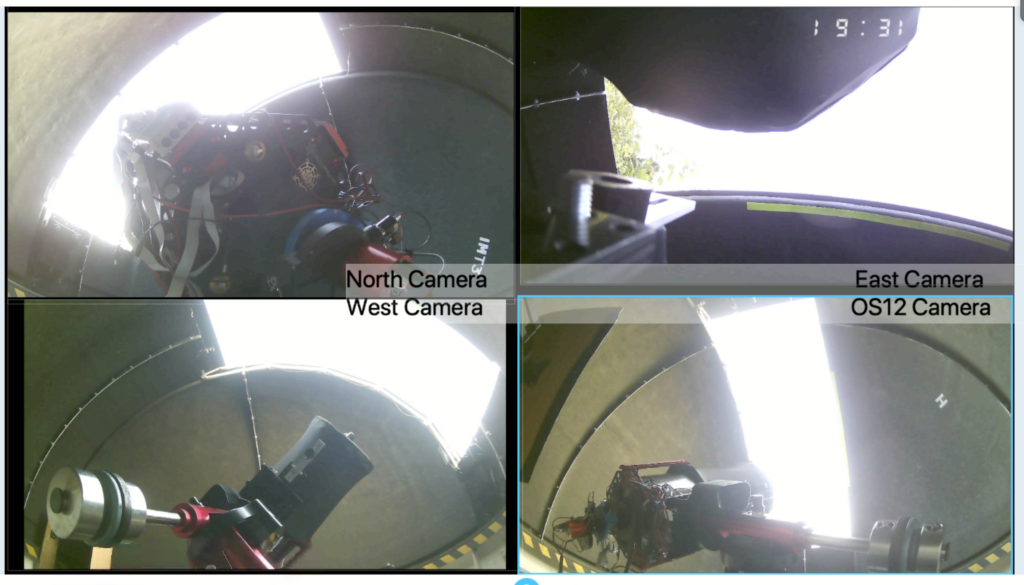
Grafana dashboard was not reporting anything from AAG, this turned out to be a bug in the code from Gingergeek which he will fix. First image from the camera came out blank from SGPro, restarted a new image and problem went away. Started imaging SH2 132 but clouds rolled in.
Dome closed
21:22 – 03:50
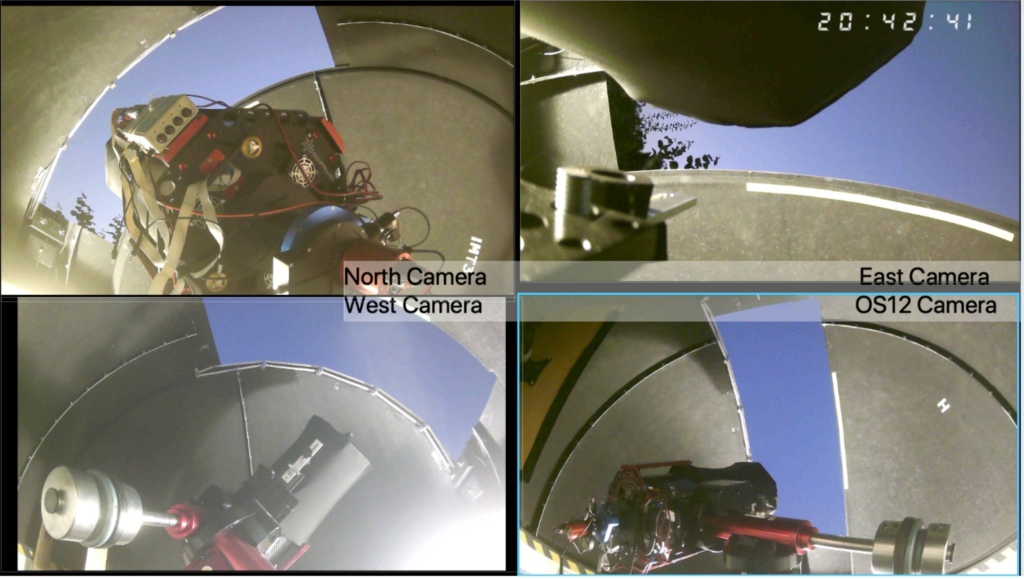
Another clear night whilst I am on holiday and after a long day of building the new warm room for my astronomy hobby. I finally got the camera imaging some more 600s Ha frames of the Sharpless 132 emission nebula in Cepheus (11 subs). The challenge was SGPro misbehaving and not plate solving. I used Gingergeek to look at it but he could not work out the problem either. So I used TSX to slew and solve instead before heading back into SGPro to start capturing data. I ran a set of Ha Flats before I moved to the next object at Rotator Angle 256.020, focus position 18500.
I then moved to SH2 183 another emission nebula in Cepheus. I let this running for the rest of the night whilst I went to bed at 00:47 during which time it took 19 images until more cloud lost the guide star which I need to fix so it restarts automatically.
I also worked out that plate solving was an SGPro bug as restarting SGPro allowed the plate solving to start working again, so useful for next time.
Observing conditions check. This morning I reviewed the environmental data and the conditions were fairly poor so I will redo the data. The Moon was just past full. The ASC video shows wispy cloud all night. The sky temperature was bumping around -13-14 degrees all night where -18 degrees is considered clear.
So I had planned to sit in on the Exoclock Annual meeting all day for both days but in the end I could only attend for the pre-lunch meetings as I had promised Dave that I would assist at the IMT3b observatory. So I will catch up on the afternoon talks when they are made available online.

The talks were varied and included experts from the Ariel Mission, Twinkle Mission, JPL, Telescope Live, BAA , members of the Exoclock project followed by workshops of which again I really wanted to be present to participate in the CMOS workshop but I couldn’t.
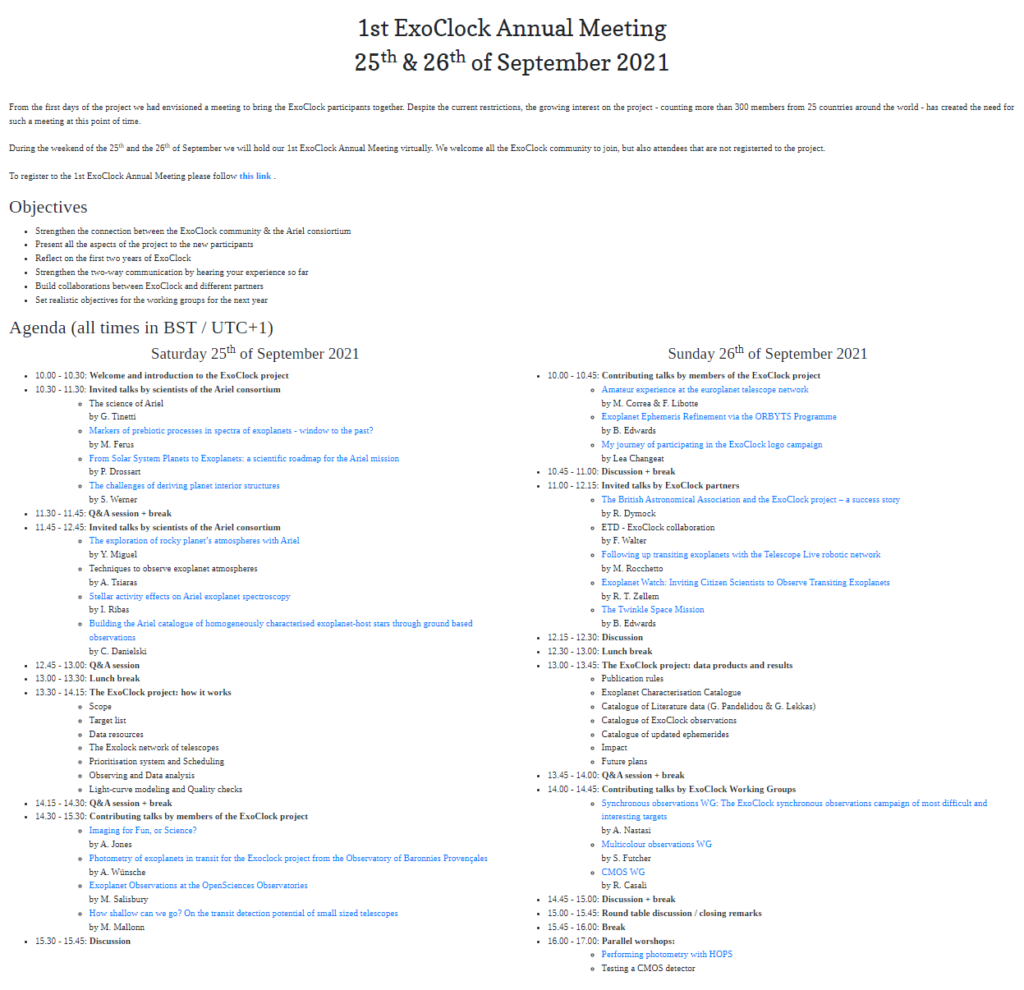
We shutdown the dome computers, network and whilst Bob started on the warm room electrics Dave and I proceeded to 1 ton of scalpings from the front of the house into wheelbarrows and then push them up the garden to be stored ready for the warm room patio construction. It was a very humid day and we were both sweating heavily by the end of it.
The dome computers were repowered and outstanding software updates applied (BIOS, Windows updates, windows software and RPi4 OS & software) before the Autumn imaging sessions begin in earnest.
The day was rounded off by relaxing with a glass of red wine and dinner with Bob, Dave and the family. As the evening turned out to be cloudy there would be no imaging so it was an early night ready for the hard graft on the following afternoon.
Another set of fine talks and I especially thought it was a nice touch that an artist Lea who won the new Exoclock Logo Competition was awarded some imaging time on Telescope Live.
Lea took a bit a time explaining her background and how she formulated the design for the new logo.

It was even better that not being an astronomer she was persuaded to undertake some Exoplanet observations and report on her experience.
The 7ft double glazed windows were put by Dave, Luke and Tim and myself. It was nerve racking as we manhandled the two panes from near the side of the main house up steps and along the garden with the Tim and Luke taking the awkward window corners whilst Dave and I used floor tile clamps on the glass.
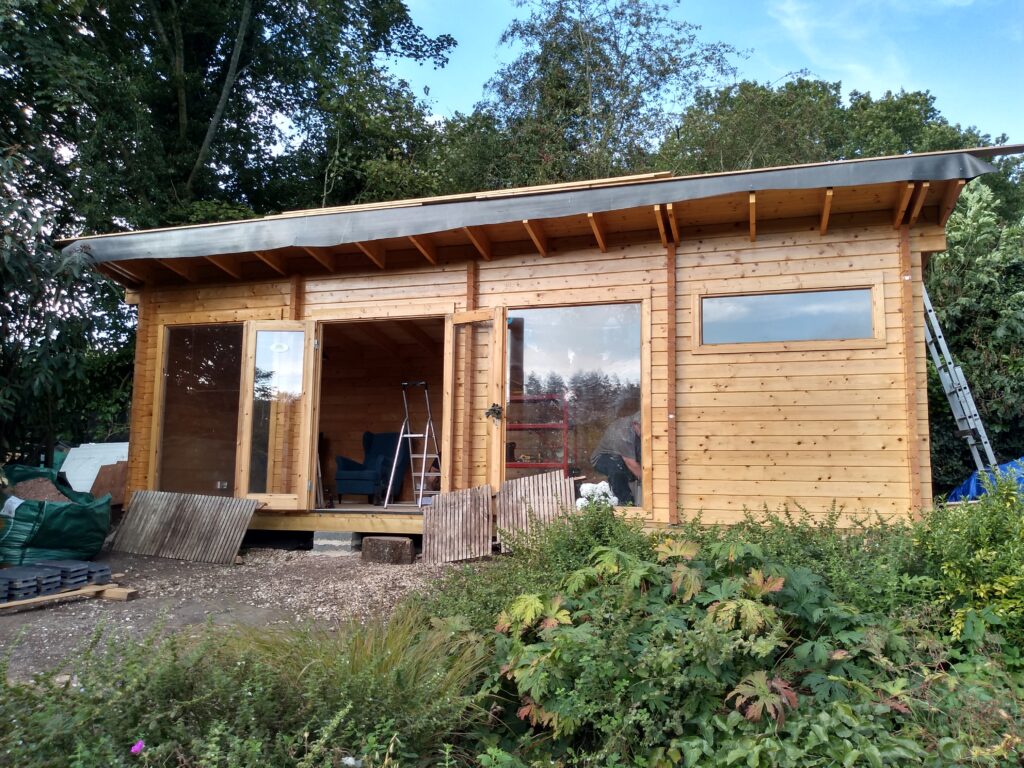
Bob came over to complete the electrics for the warm room and I left when Dave started stretching on tiptoes to put in the red & white light fittings. I figured I could complete the remaining software updates remotely.
The AAG software was updated to 9.1.4 from the old 8.1.0 version, we still need to investigate the wind sensor reading with Jamie from AAG.
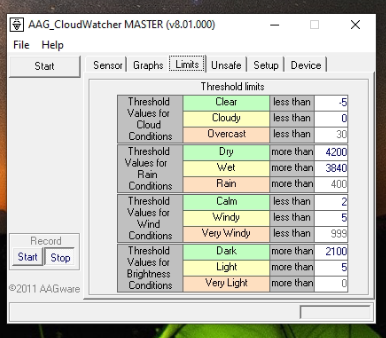
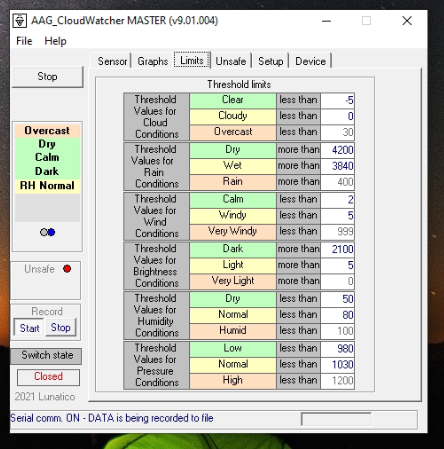
So we now access to the Humidity sensor settings and the appropriate alert levels. Previously I had to rely on both ASCOM local conditions and internal dome humidity via ASCOM (BlueAstro StickStation) but I wonder if we want to trigger an unsafe state by including the humidity thresholds.
21:00 – 02:38
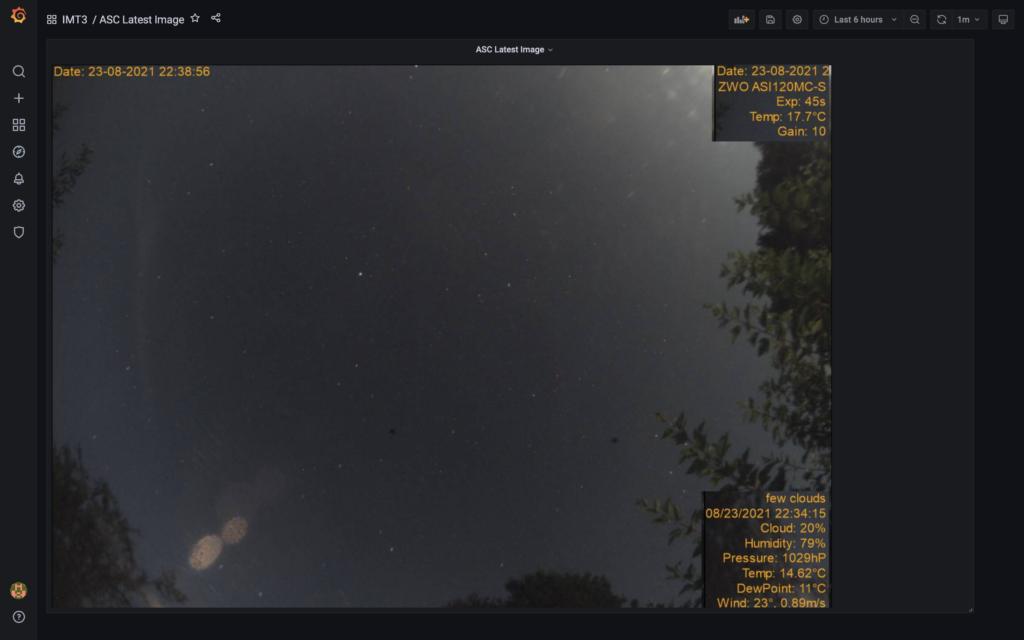
With a near on full Moon, the choices for deep sky were limited so I set about looking for Sharpless emission nebula. First on my list was SH2 136 in Cepheus. I slewed, aligned, selected the Ha filter, rotated the camera to find a guide star, tried to run autofocus which failed (I set the focus point to 18500 for Ha manually) and then imaged a few subs at 600s, which is when I realised the problem.
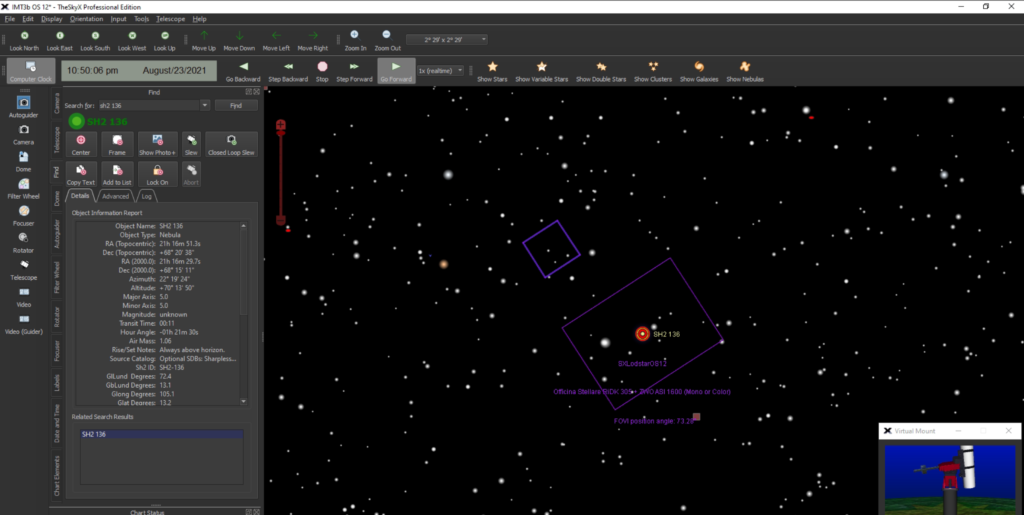
Nothing but stars….. I googled around and it transpires that some fo the Sharpless catalogue is emission and the rest is reflection! Now I know this useful fact I will double check each image I go after.
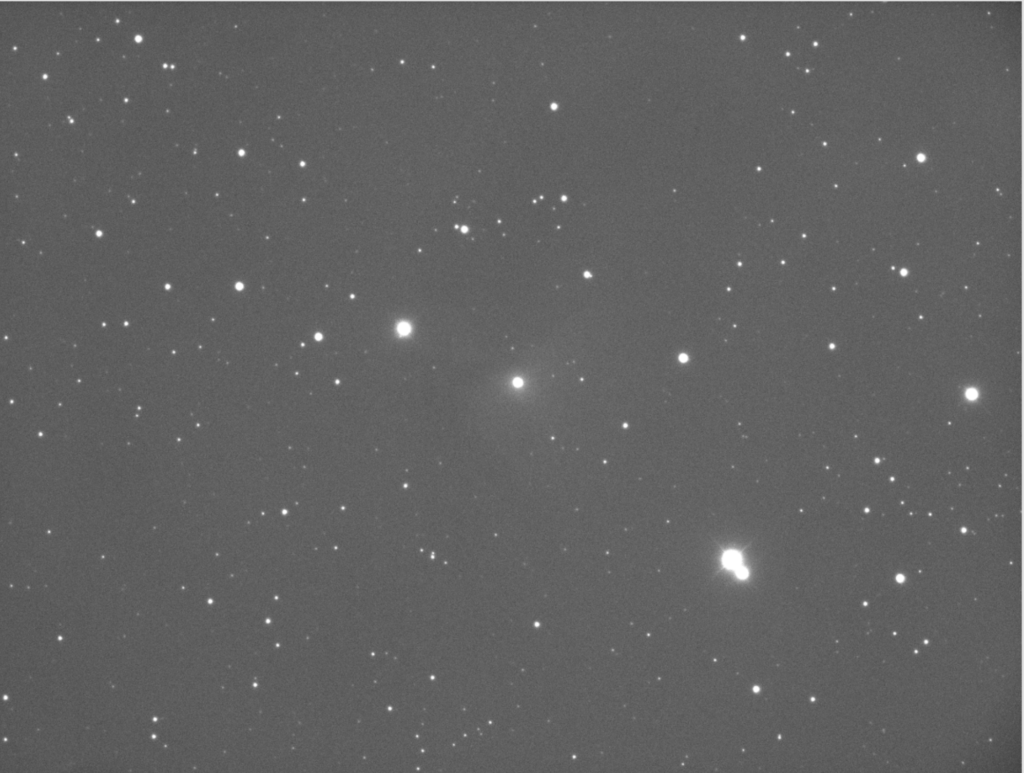
Before I moved on I took a single 300s luminance frame just to see if I could see anything at all. The answer was not a lot, so I moved on. This time I choose an emission nebula, much larger than my FoV but still it should be a pleasing object, SH2 132, an emission nebula also in Cepheus.
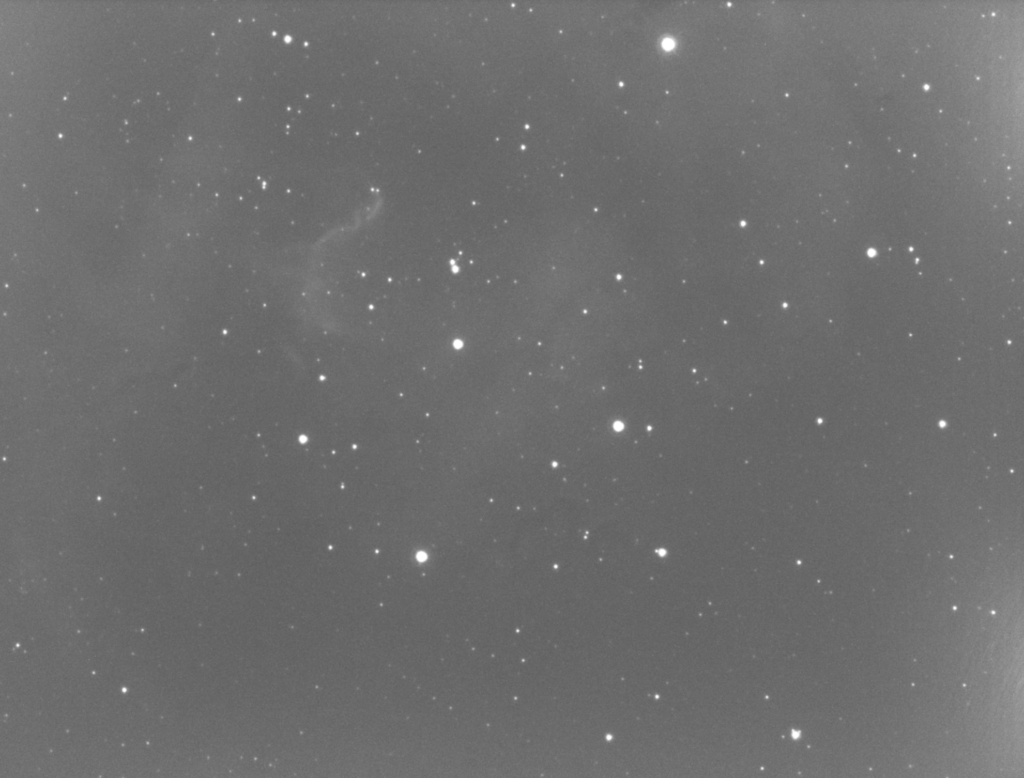
I set about imaging 14 x 600s in Ha and then went to bed at 23:48 leaving the system running for another 2 hours before hitting the meridian, as I have not setup the scope to flip yet.
At 02:38 I woke and shut the dome.
22:21 – 01:11
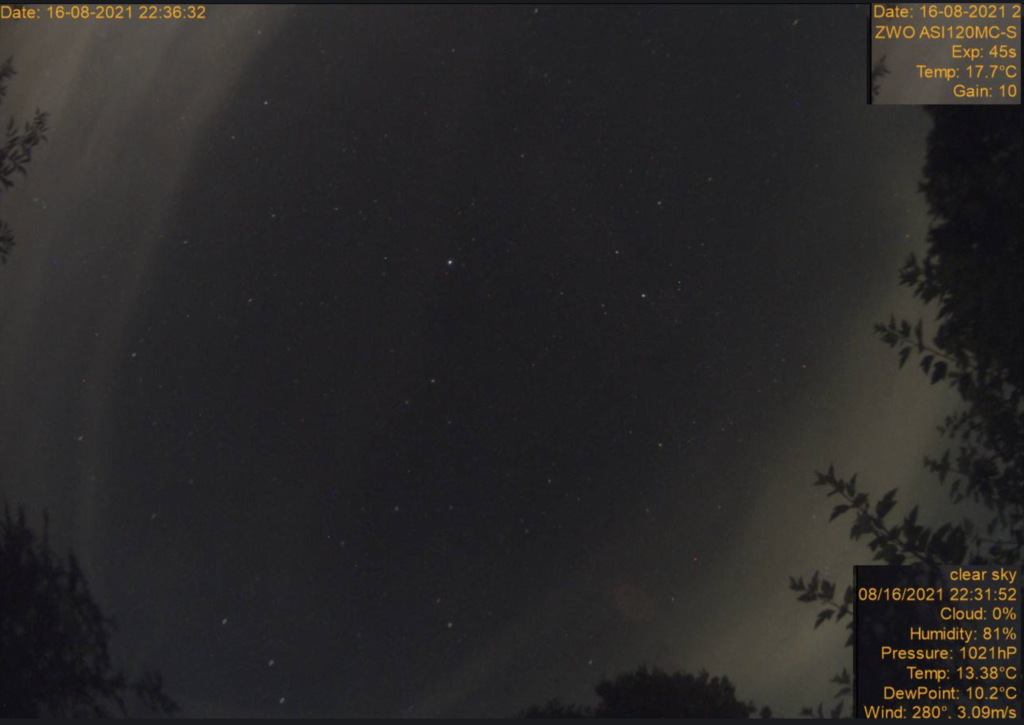
It’s been a while again due to work and the weather. A quick look around the sky this evening and make sure I still know how too use the telescope. So after getting focus
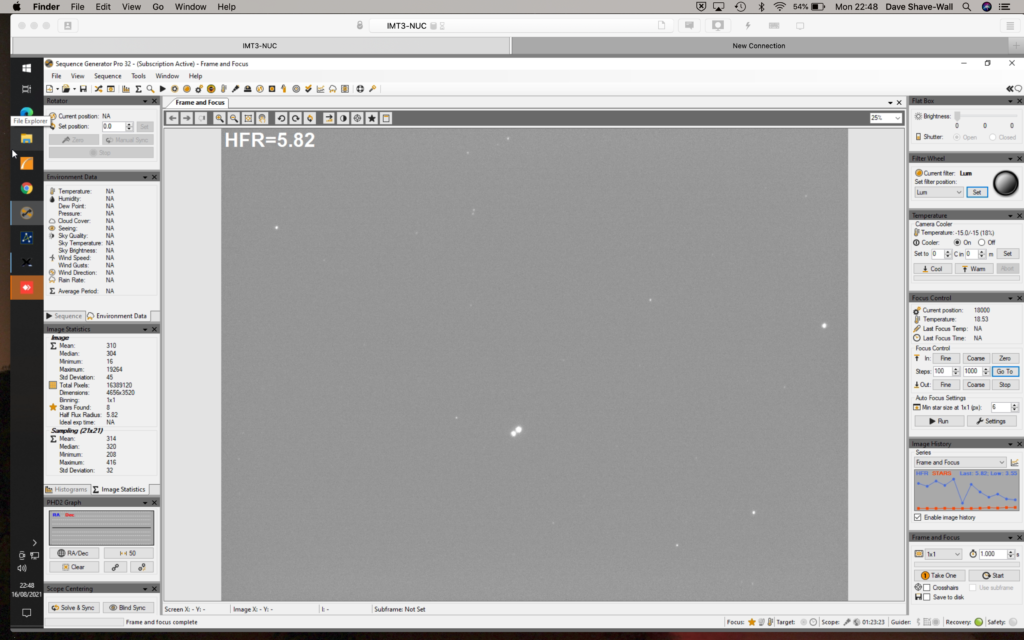
I slewed to Saturn as it was up and as expected it was very small.
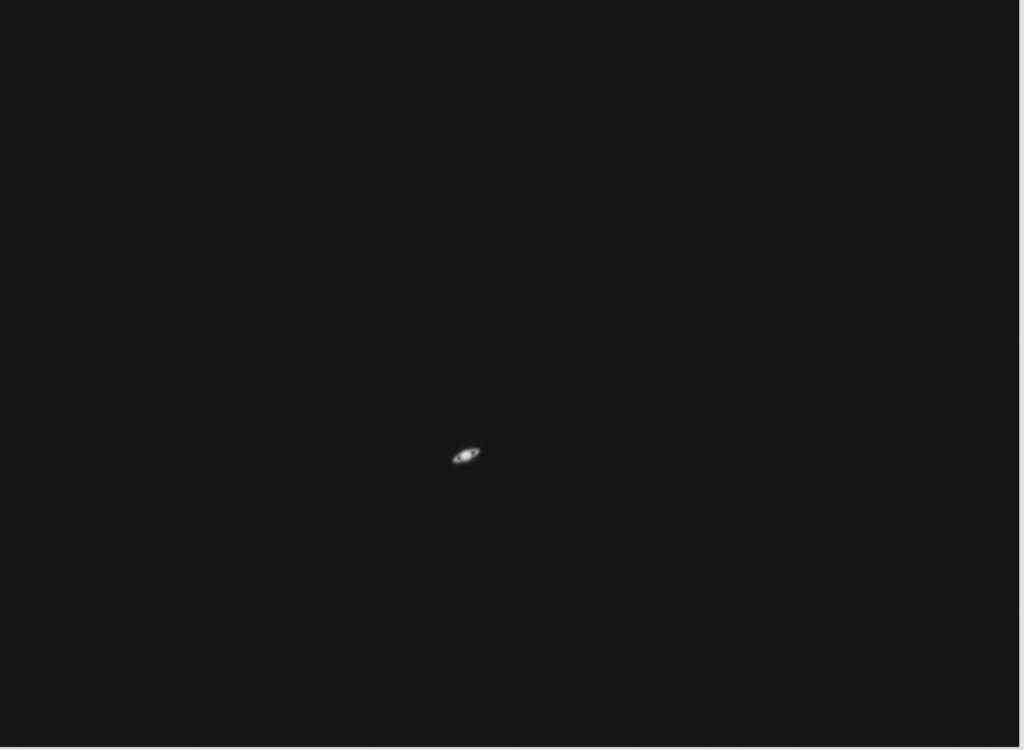
I then slewed to the Pacman nebula, NGC 284 also known as Sharpless SH2-128. I switched to narrow band and the Ha filter. I plate solved, centred
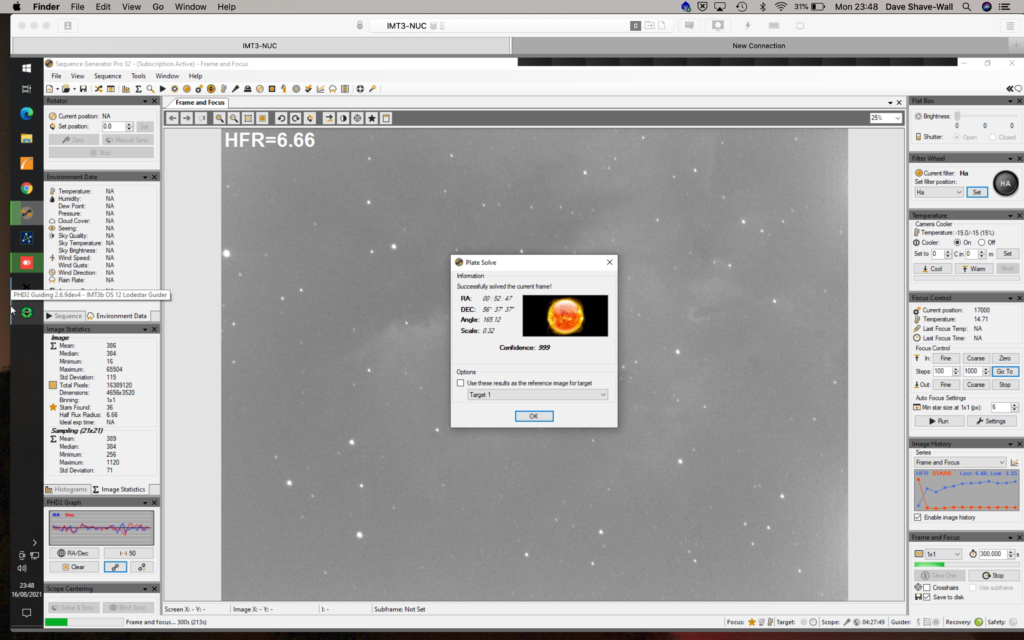
and then proceeded to take 300s shots.

The camera was called to -15℃, the outside temp was 16.2℃. The focus position was at 18,000. The camera itself was set to Gain 139 and Offset 10, the rotator at 345.560°.
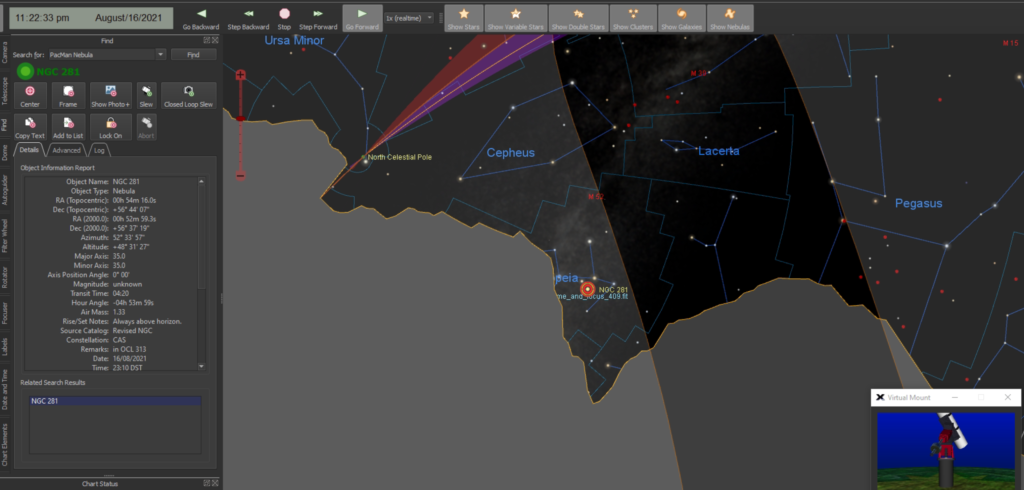
I took 75 x 300s images until I closed the dome, by which time it was very light. I went to bed in-between the start and end of the imaging run, but then realised the dome safety does not work due to the cable from the ASC being severed due to a Stanley blade incident with weed matting.
The good thing is GingerGeek and I managed to focus the ASC during the day on some trees in the forest across the valley and we managed to get it in focus.
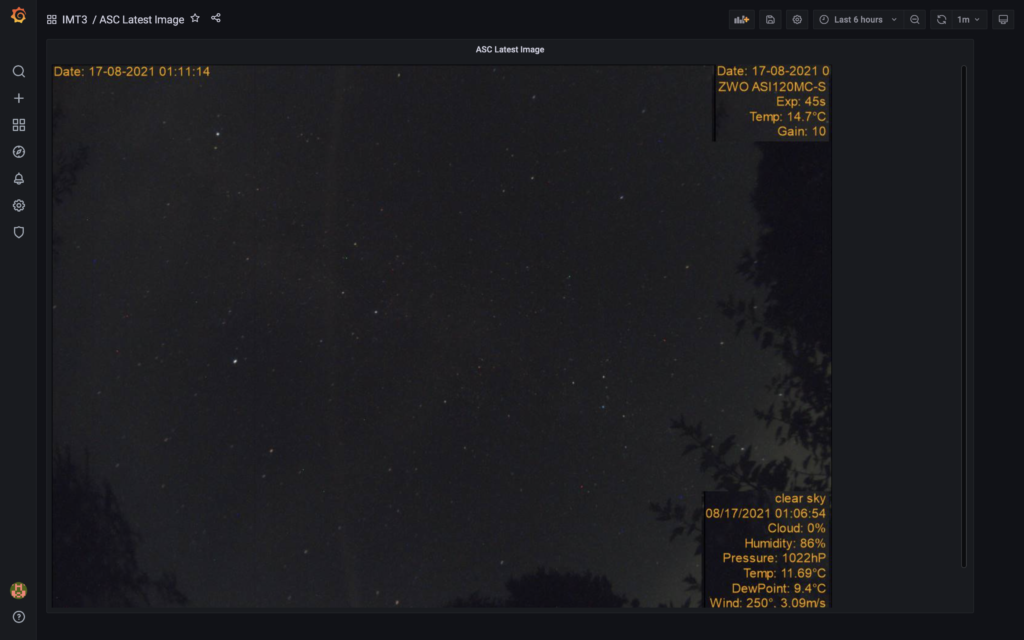
I will process the data last some point and see what it looks like.
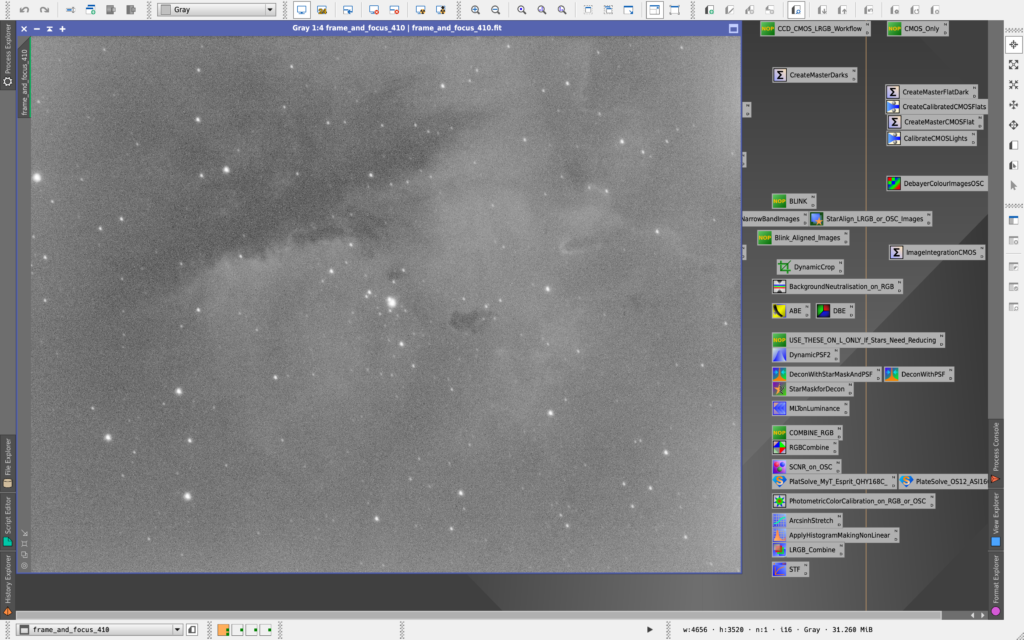
22:38 – 01:18
Slight clear spell and no work tomorrow 🙂 so I am opening dome to see if my scope is now repeatable, so can I open, get object in FoV and then image whilst guiding.
Of course as soon as I opened up the dome it became cloudy. Fortunately not for long, so I waited it out then noticed next to the Home position a galaxy, so I went to image that, NGC 4437, which is a pencil thin galaxy in Virgo.
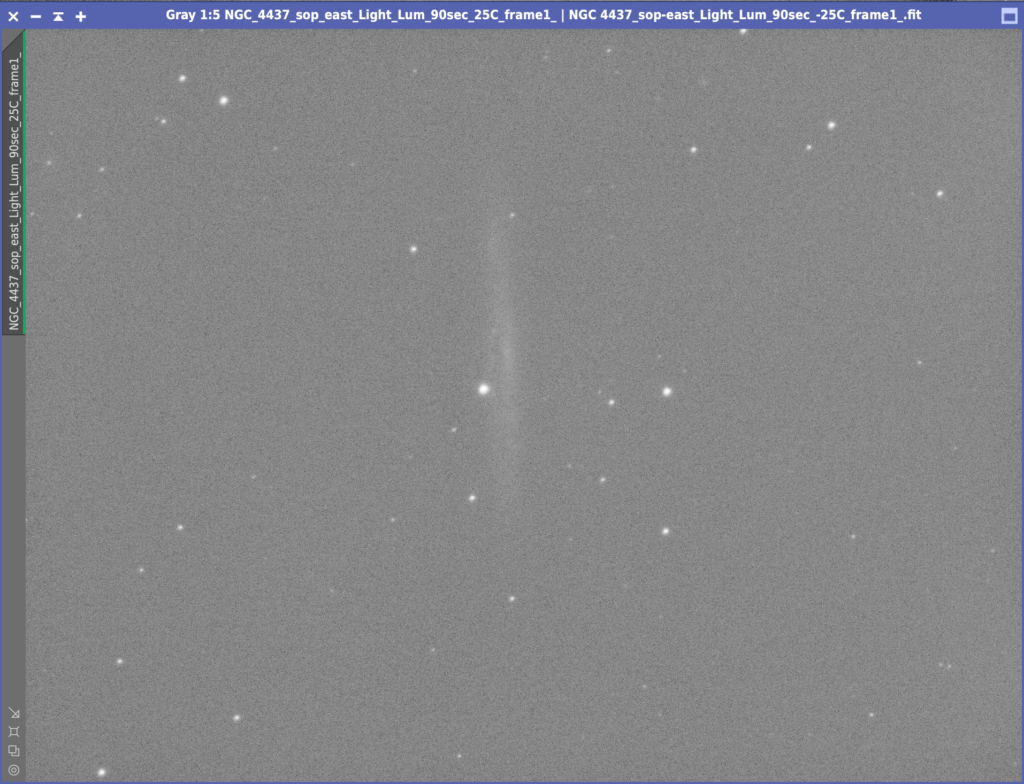
Unfortunately there was no decent guide star, even with the rotator I could not find one. So instead I took a bunch of 90s images, just short enough not to trail. I actually took 20 x 90s Lum and then 10 x 60s RGB all at Gain 10 Offset 10 and -25℃.
I then turned my attention back to M14, slewed and set the imaging running. Unfortunately I was only 1 frame in when I had to stop at 1:18am as the clouds had returned, so this time I packed up for the night.
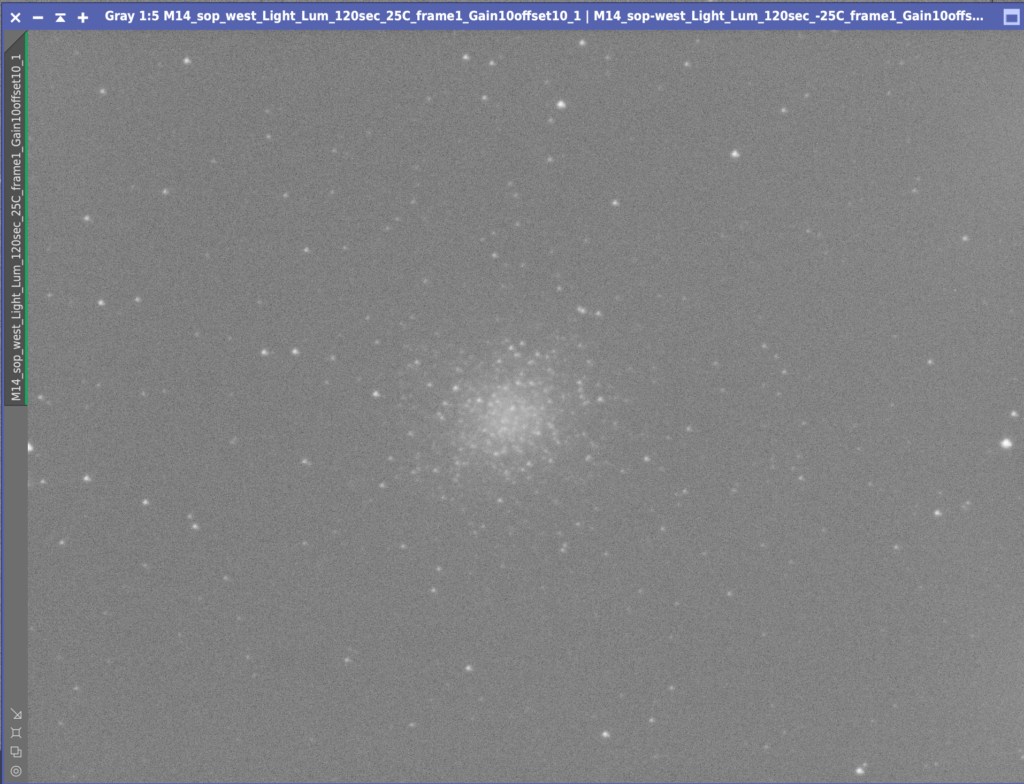
Learning tonight was don’t forget to focus and take some darks for the off axis guider.
Next Session :
23:12 – 01:39
Targets for this evening :
M14
Imaging Run Checklist
Connect Scope – Complete
focus on Red 19179 @23:41 – Complete
Back on M14 tonight to see if I can finally get a complete or even partial data set. M26 is the next object after.
Cloud!
Next Session :
20:37 – 03:15
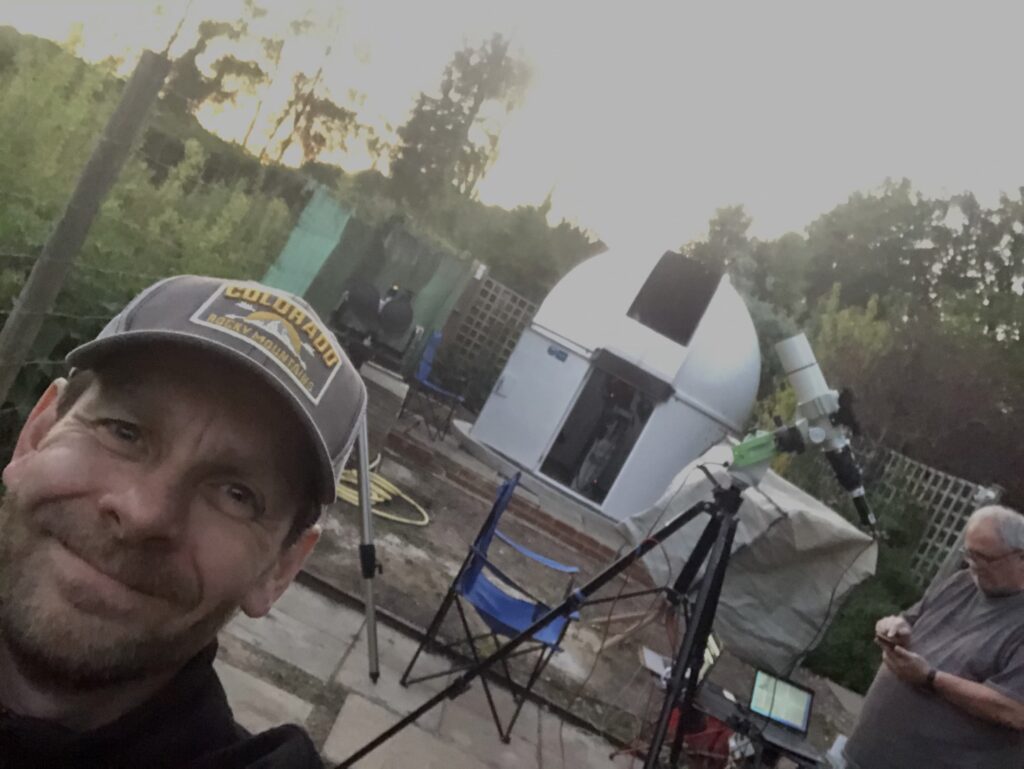
I will start by completing the TPoint run tonight before moving on to calibrate the guider and make sure I can get and image. So by 10:30pm it was just on the border of being dark enough to take and plate solve the first image and continue the TPoint session.
So by 11:30pm I had finished the 212 TPoint model.
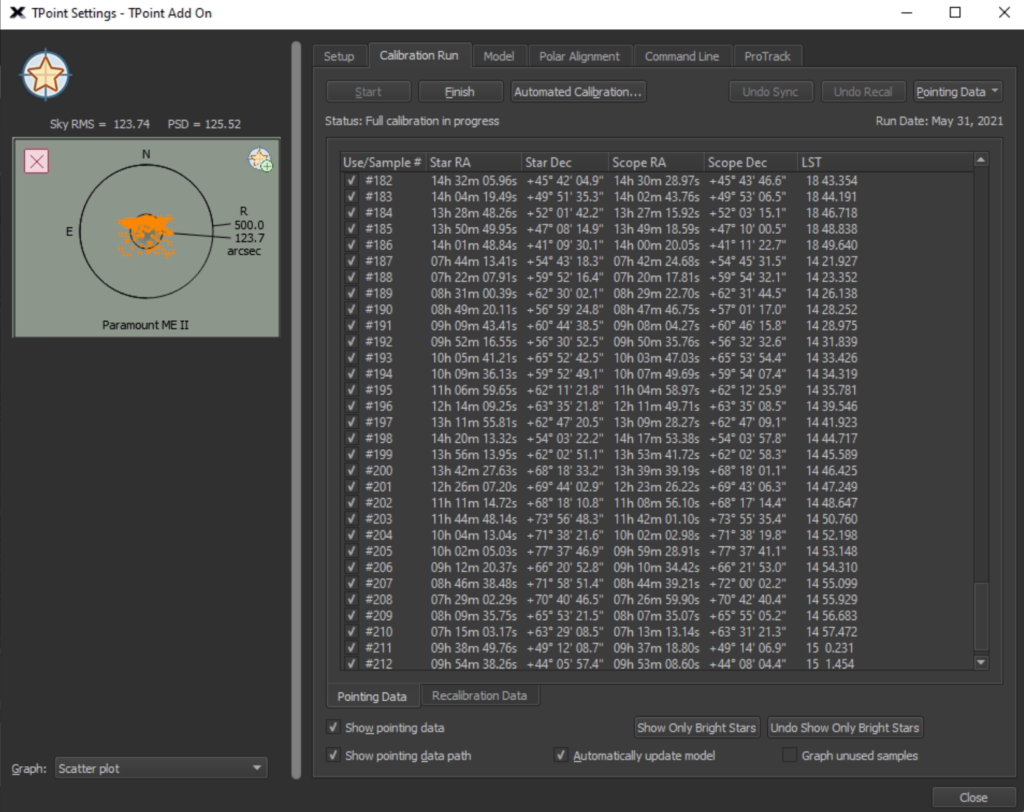
The next thing was to do a Supermodel on the data. This reduced the error pointing from 500 & 23.7 arcsecs to 100 & 19.

Now connected camera to SGP and running autofocus on a mag 6 star, new focus position for Luminance is 18,312 at 00:13

I then setup OpenPHD2 to guide and here I hit a problem. The guider did not move the mount. I have not got a guider cable attached as I do not want to do Pulse Guiding. Instead I always do Direct Guiding. So I looked at the settings in PHD2 and the mount was not set. So I went and searched my blog and I need to select the ASCOM Telescope Driver for TheySky. However it is not in the dropdown list.
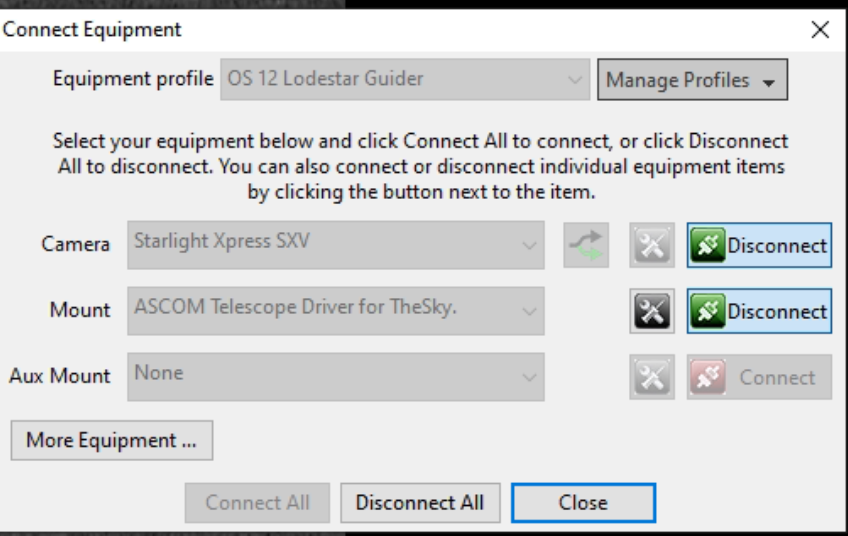
Finally after a lot of head scratching I remember GingerGeek removed ASCOM and upgraded when I moved house. He had inadvertently removed the said driver and forgot to reinstall. I went to the ASCOM webpage, found the driver which took me to the Bisque website and downloaded. I then installed, restarted TheSkyX using PHD2 after I had restarted PHD2, I selected the said driver in the Mount dropdown and connected. This then moves the mount when I calibrate and subsequently guide. Fortunately I found all these answers on my blog posts from last year when I had setup the guiding originally.
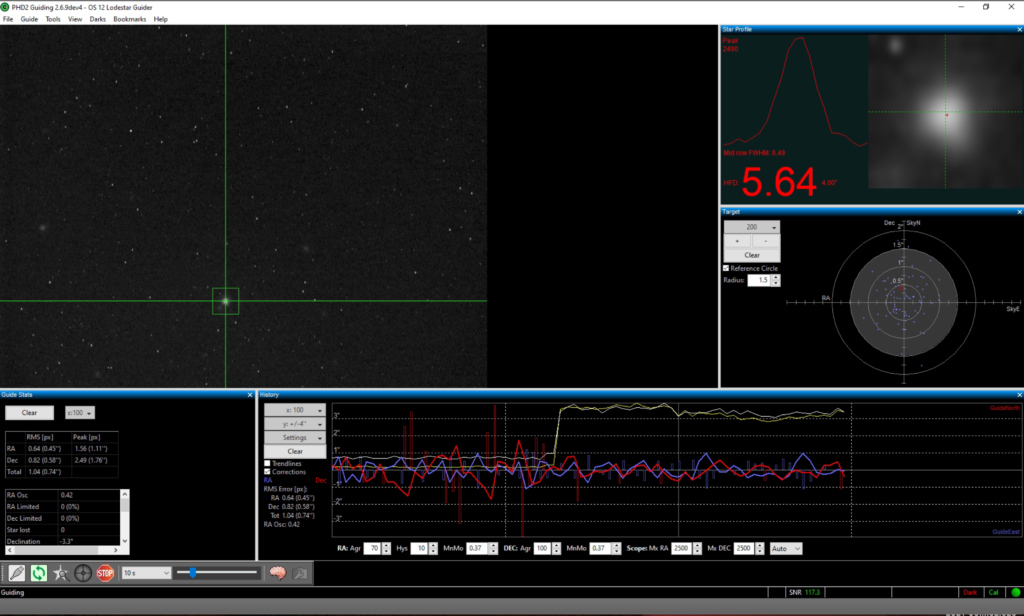
Now all of this is working it is rapidly approaching the time when the sky brightens, so it is already after 1am. I slewed to M14 using TSX, performed a Closed Loop Slew with the camera connected to TSX initially. Once I confirmed the object was in the centre of the FoV, I then disconnected the camera from TSX and reconnected to SGP.
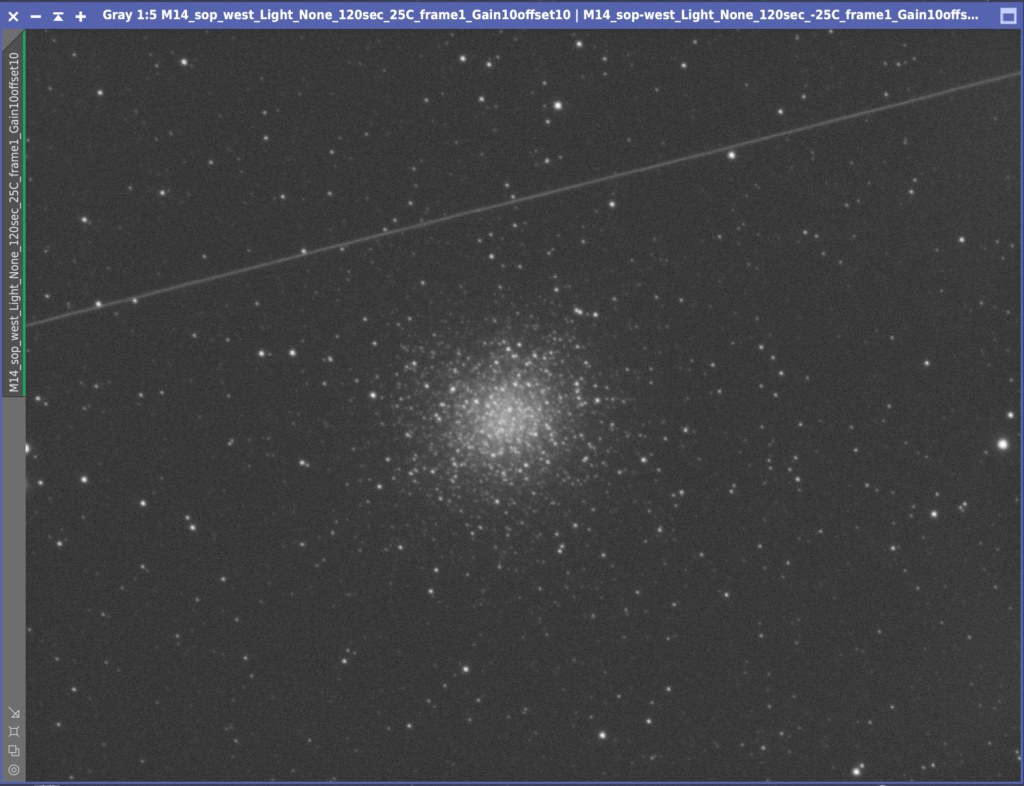
Guiding started, all started to work well. A couple of snags, focus position was wrong in the filter setup so I need to change. Tries to autofocus on start of sequence so I need to change that. I then decided to grab 1, 2 and 5 min subs of LRGB to determine the best exposure. However half way through and some localised cloud rolled in and stopped the session.
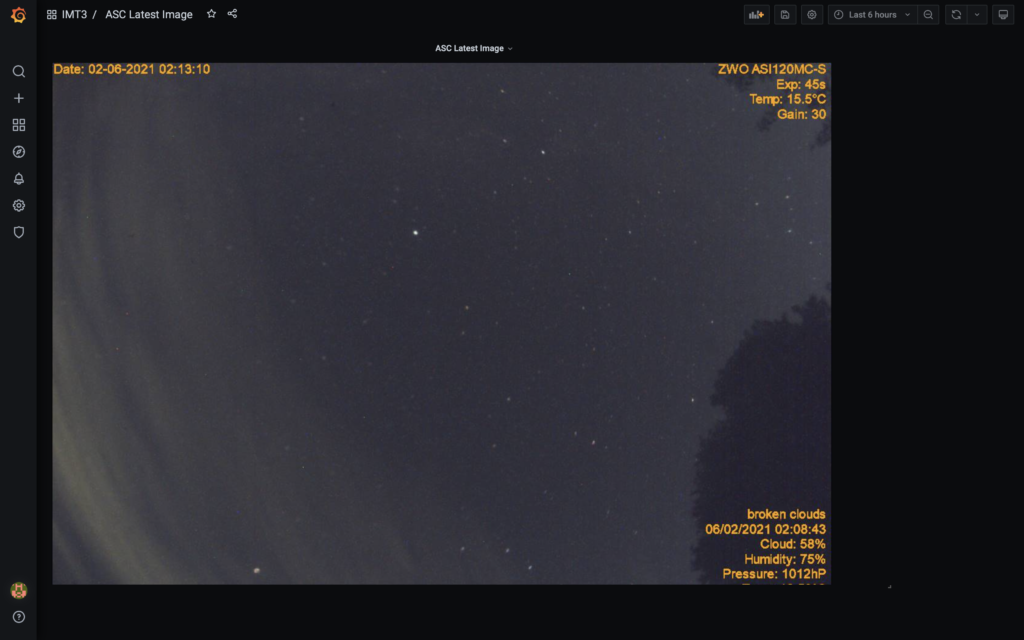
The good thing its the closed loop slew is working well in TSX.
So with the local cloud still causing issues to the South, I slewed North East to another Messier target on my list, M29. Once again I setup 1,2 and 5 min exposures across LRGB to see which would be best. All the imaging tonight for Globular Clusters and Open Clusters was done at Gain 10 Offset 10.
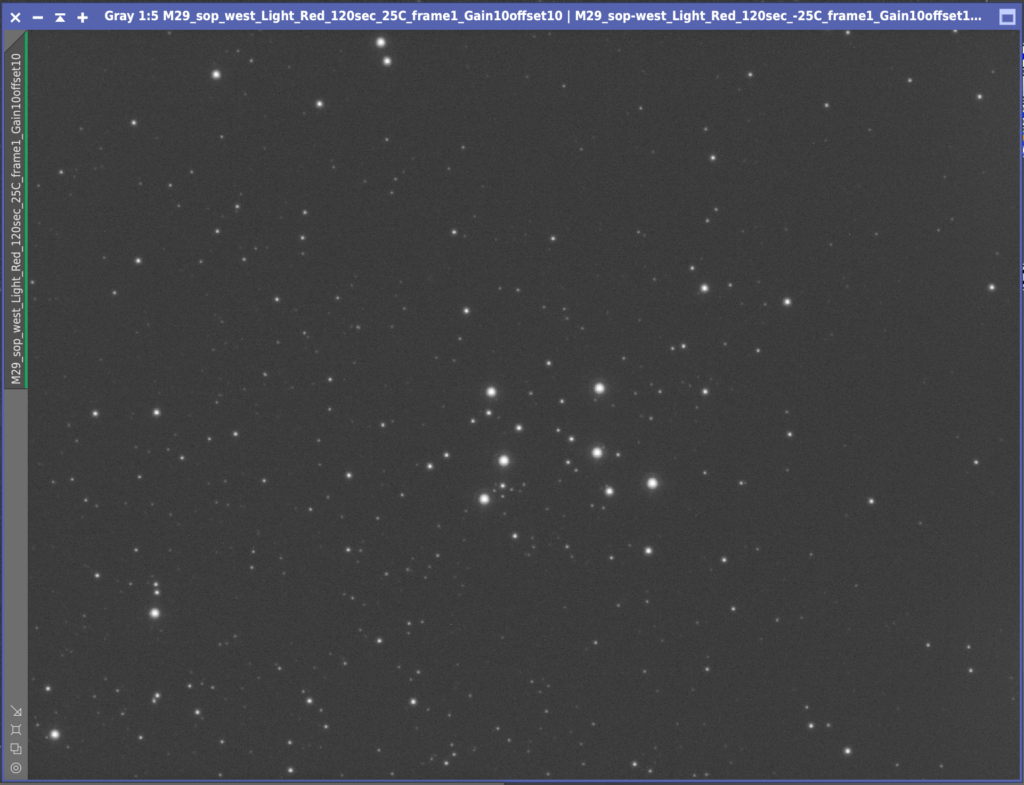
I manage to get frames and then I was afflicted by the same cloud. So instead I packed up and called it a night.
19:25 – 03:28
Bob came over again tonight which is great company. He setup his Skywatcher AZ-GTI portable mount with his Tak FS60 on it so we could do visual throughout the night on a goto mount along with my star hoping through the 100mm binos.

Skywatcher AZ-GTI
I started the evening whilst light, measuring for the replacement T2 (M42) adapter for the camera train. Given the 0.083 microns per movement of the FLI Atlas focuser I need to reduce the image train length by 3mm. So the new adapter needs to be 31mm, current M42 adapter is 35mm. Meanwhile my AstroCat Fluffy decided to get some more sleep before dark.

Fluffy taking a hard earned nap
Next up was writing the Lat Long on the dome so I can give it to anyone that visits. With that done I started testing the rotation of the dome to make sure the dome no longer slips since I put the anti-slip tape around the edge. After spending some 15mins rotating the dome it seemed ok, it would be fully tested later when I redo the Tpoint model. This is due to the 2.1 arc minutes of error in my azimuth polar alignment that needs adjusting by 4.2 tics.
I adjusted the mount as above and ran a 20 point model. This told me the error int he azimuth was less than 1 arc min and that there was no need to adjust the mount any further, however it had low confidence. So now I will run a full 212 Tpoint model to see what it reports.
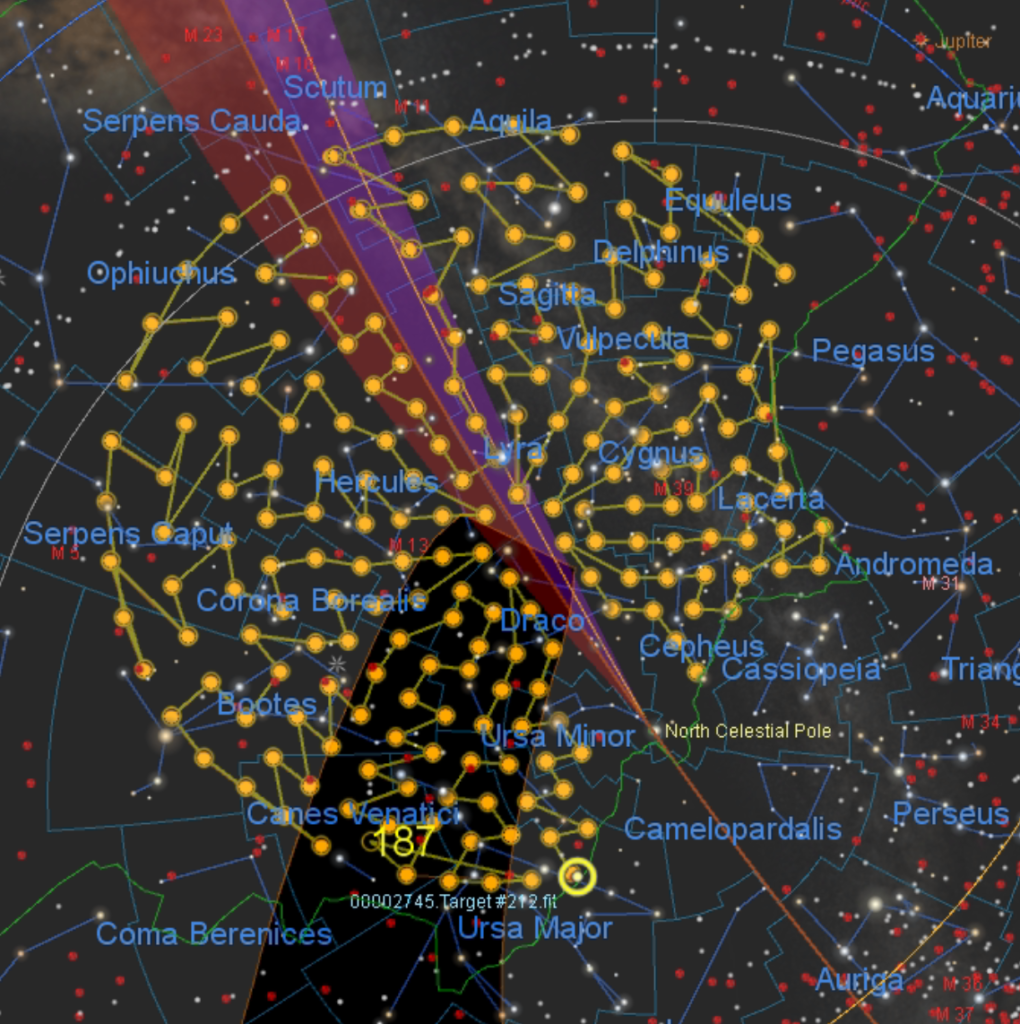
On starting the run I hit another problem, the mount hung and beeped. This was due to a balance problem on the tube which is weird as I thought it was fine. However maybe I had not rebalanced since adding the rotator properly. I removed a little weight at the front of the OTA and shifted it backward. I then tried again but again it hung and beeped. It transpired to be the same loose cale I had before, the focuser cable which had come loose. I applied some more white electrical tape to hold it in until I get round to changing the 2.1mm adapter.
At 23:40 I started a new TPoint run and am now 7 stars in and all is well. That did not last for long, around 47 Tpoints and I kept getting blank images. It seems the dome had lost its position. The Home sensor does not seem to be registering. I slewed the dome manually to Home at 123 degrees and synced that back into the dome controller. Starting the TPoint again resumed stars being seen.
Meanwhile Bob was moving from object to object without the AZ-GTI mount. M5, M57, M10, M12 along the way. We easily split Albeiro although Bob was slightly worried about my eyesight as I initially struggled. We saw the head of Scorpius pop up above the tree line but we didn’t get M4 from the IMT Plateau and Antares only just made it above the tree line. So I decided to relocate my bins to another spot in the garden by the Sun Plateau so we got M4 through them. M17 was seen through he 100mm binos also, looking remarkably like a Swan! Finally as it got light just after 3am we nabbed Saturn, Jupiter and the Moon.
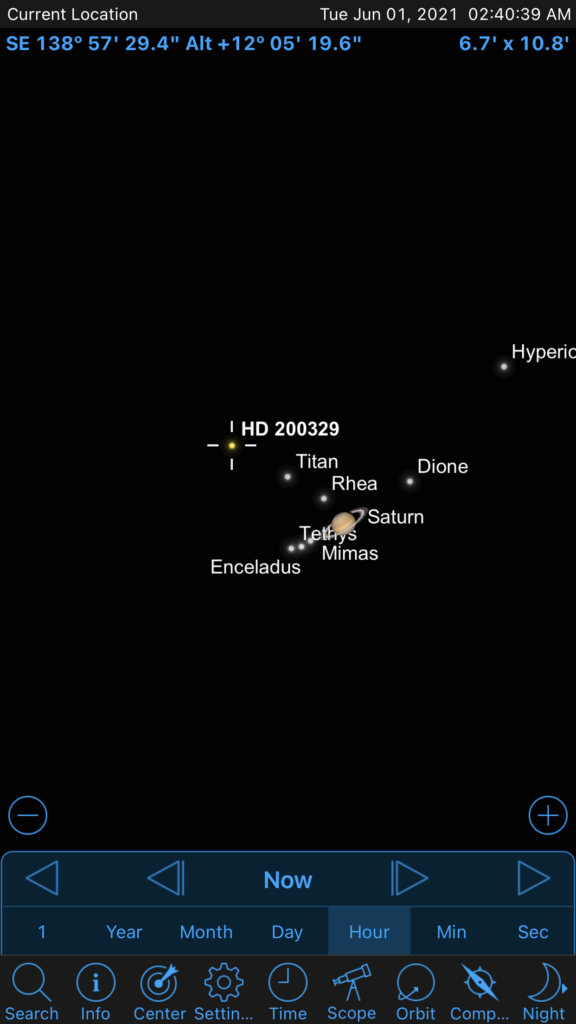
By the end of the night I was at 187 TPoints so not enough for me to be confident the whole sky was mapped, nor enough to fix the model and have Protrack running. I will continue the mapping when dark tomorrow night.
19:30 – 03:19
GingerGeek came for a visit with his kit for a night observing.
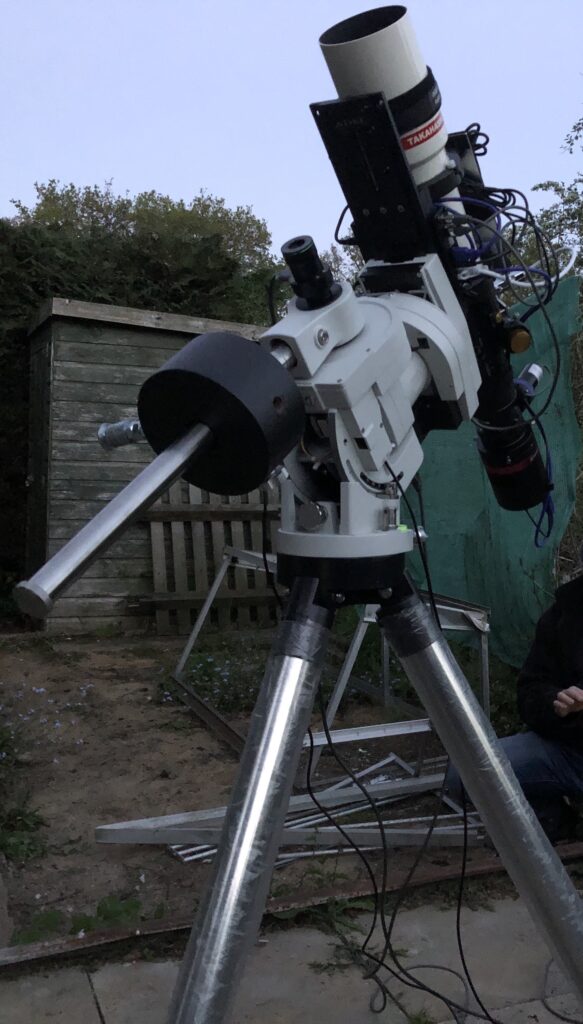
So whilst he sets up I have been testing the rotation of the dome as it still jams. After some testing I now believe the only fix is to find some grip tape that will add as friction to the inside of the dome between the dome itself and the thruster wheel. I have found some anti-slip tape on Screwfix which is 50mm wide and 18M long for £10, which will do the trick.
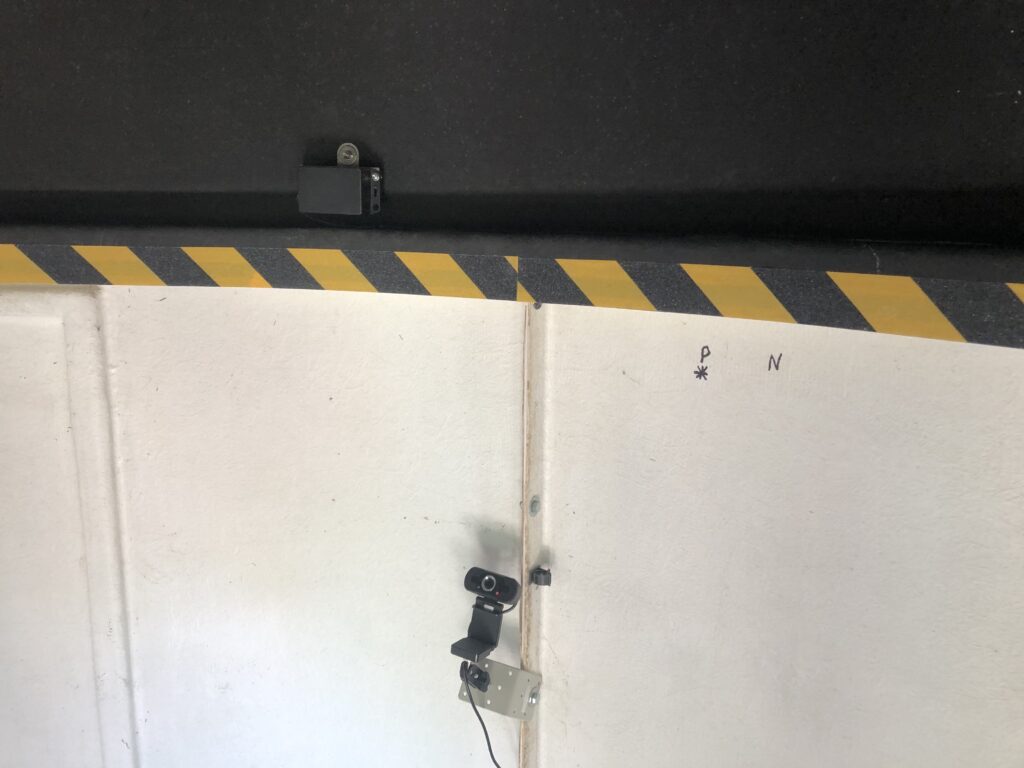
Just watched the ISS go over, first time for GingerGeek. Videoed it using the iPhone 8 and it came out great. Also have the lovely noise of an owl in the background.
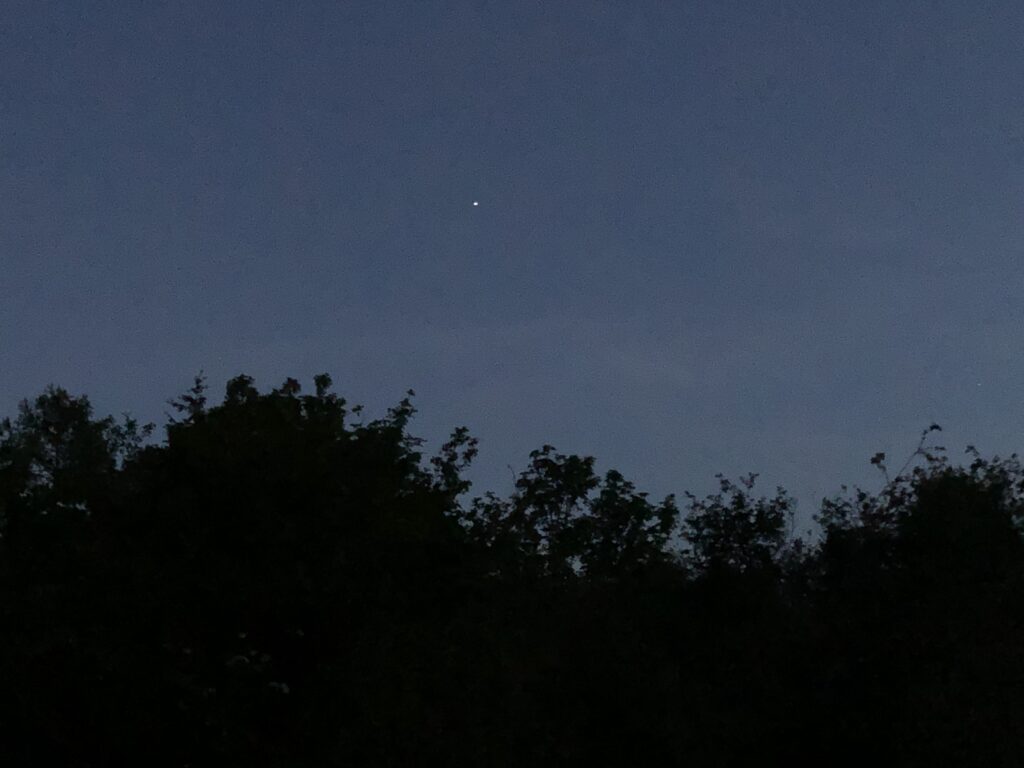
Started Tpoint at 11pm. Used 30 second exposures and image scale of 0.33 arc/pix. I am performing a 212 point Tpoint model.
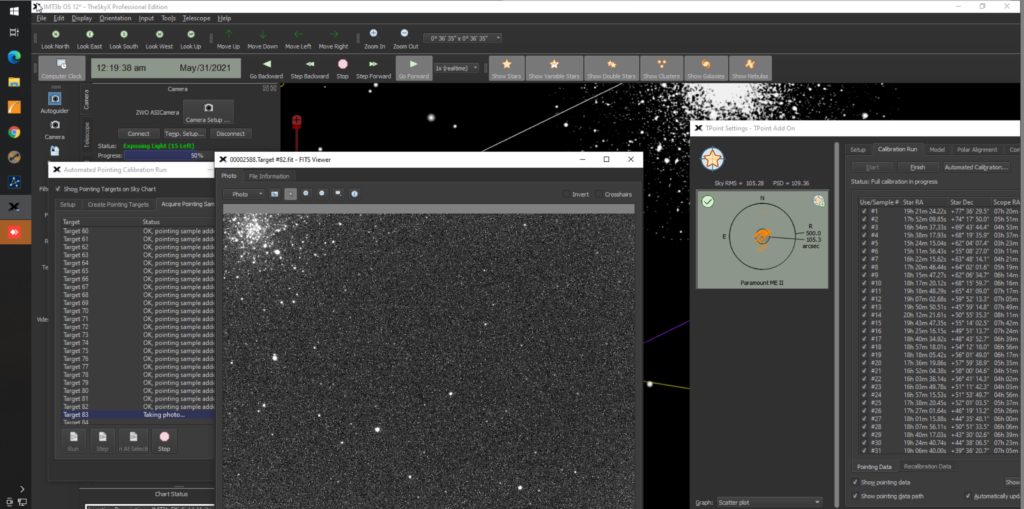
Well TPoint model complete, of course I forgot to initially do around 25 TPoints, adjust the polar alignment which is our in Azimuth by 2.1 arcmins and then rerun.

Meanwhile before we finished I ran one of GingerGeeks M13 images through PI as a single frame from his new camera.

Started to pack up at 3:19am
20:30 – 01:30

Another long pause between observations, after what seems like 3-4 weeks if not 1-2 months of storms, gales force winds and rain. However, tonight Bob came over and now that I have the new rotator installed with the new adapters I could use the 12″.
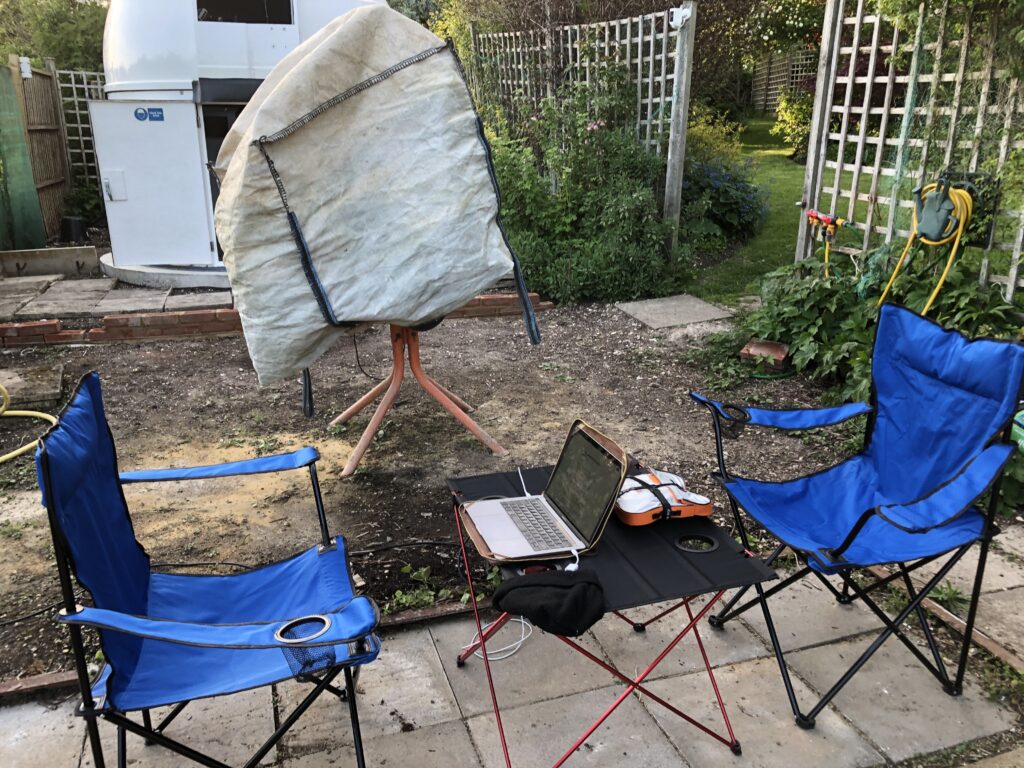
We setup under clear, warm and light skies. For the first time we put a couple of chairs and table down by the IMT3b. Bob helped setup the 6″ dob and the 100mm binos. We opened the dome and awaited darkness.

I wanted to make sure that the rotator worked well, that the Field of View, FoV, worked within TSX and that I setup a small amount of Points on the scope. We also decided to see if we could visually see the Intellsat satellites and that I could track on them with the 12″.
Whilst waiting for darkness, Bob found what looked like a planet rising in the East, however it turned out to be Vega. We noticed in the corner of the IMT area by the IMT shed that you could see not only Polaris, now the Sycamore had been removed, but also low in the East and thus Vega at +11° altitude.
Bob then spotted Polaris first! Amazing! I normally find stars first, especially Polaris. However given Bob was in my garden and unfamiliar with the his bearings it was astounding he found Polaris so quickly. Well done keen eyed Bob 🙂
Soon darkness fell and we pointed the binos and scopes towards Intelsat. It became apparent quickly that we were not going to be able to eyeball it due to not having a good enough understanding of the surrounding star field. Meanwhile on the 12″ we slewed and quickly found the satellites. We then use the rotator to move the FoV so that we could fit 4 satellites on the chip which was pretty cool.
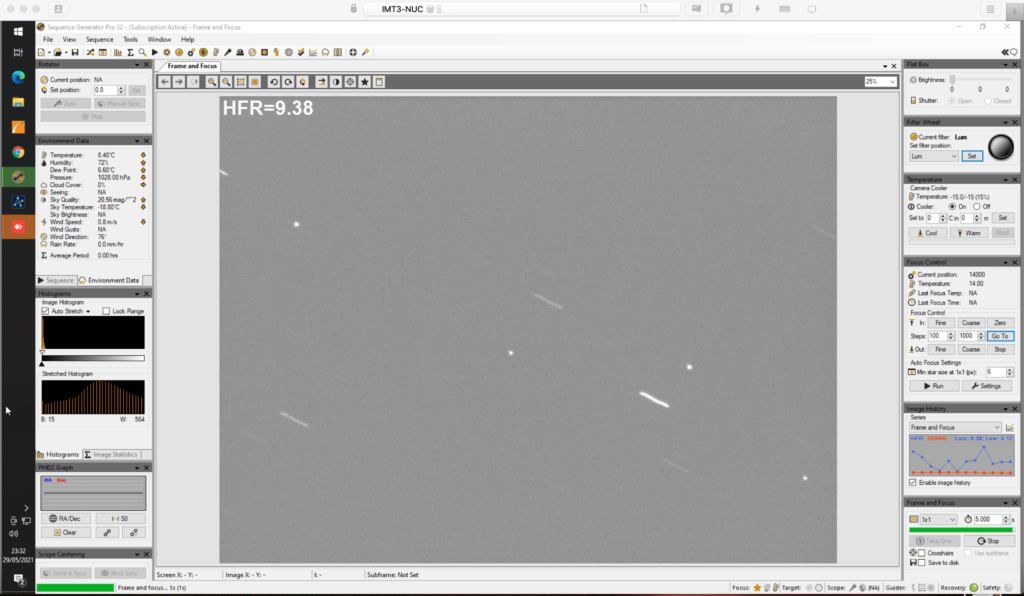
We then star hopped to M5 with the bins, then with the 6″ and finally with the 12″. The view through he 100mm binos was of course fantastic, fair superior to the 6″ dob. The image through the 12″ showed a dense star field.
I then set about collecting a half dozen Tpoints just to make sure that objects we in the FoV, however the first slew proved the polar alignment was good enough to do this. I produced a small TPoint model and stuck to that for now. I will need to go out later this week and perform a much longer automated TPoint. For that I need to fix the dome this is currently jamming.
We then sorted the rotator out, making sure the angle and FoV represented in TSX was correct. After changing the x and y values for the FoV indicator it worked perfectly.
About midnight we saw the best fireball ever cross in towards South East just below Arcturus. It was very orange and stunning.
After then slewing the 12″ to M81 to make sure the rotator reflected what we actually wanted to see, Bob and I called it a night. The Moon was due to rise shortly.
A good night for us and welcome after the rain and a harsh Covid-19 lockdown.
10th April
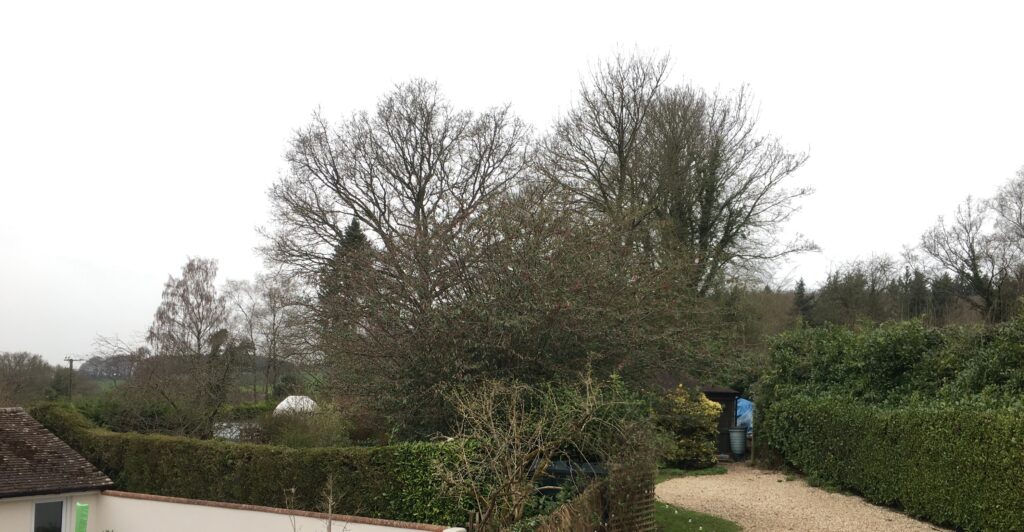
A lot of progress since my last blog. I have gone from an empty shell of a dome to an observatory able to take a first light photo!
The first challenge was the dome rotation. It was binding. I quickly found out, with the help and advice of Dave Boddington, that in fact the dome was not circular and in fact it was oval in one axis by around 2cm. This was enough to pull the walls in causing the dome to bind. So a quick look around and I found the culprit. Where the concrete on one part of the dome base had settled unevenly there was a 1cm drop and as I had tightened the dome bolts to it, it pulled the walls inwards.
To resolve I unbolted the walls, put my foot on the offending side pushing it back in by 2cm and had Luke drill and bolt new holes. We then found some slate shims and shimmed up the part of the dome where the gap was. This fixed the problem and I now have a round rather than oval dome 😎

Next up was digging out the surrounding ground around the dome, as you can see here, the ground level on one side is around 4″ higher than the other. This would take some serious digging and many, many wheelbarrow loads of soil to moved.
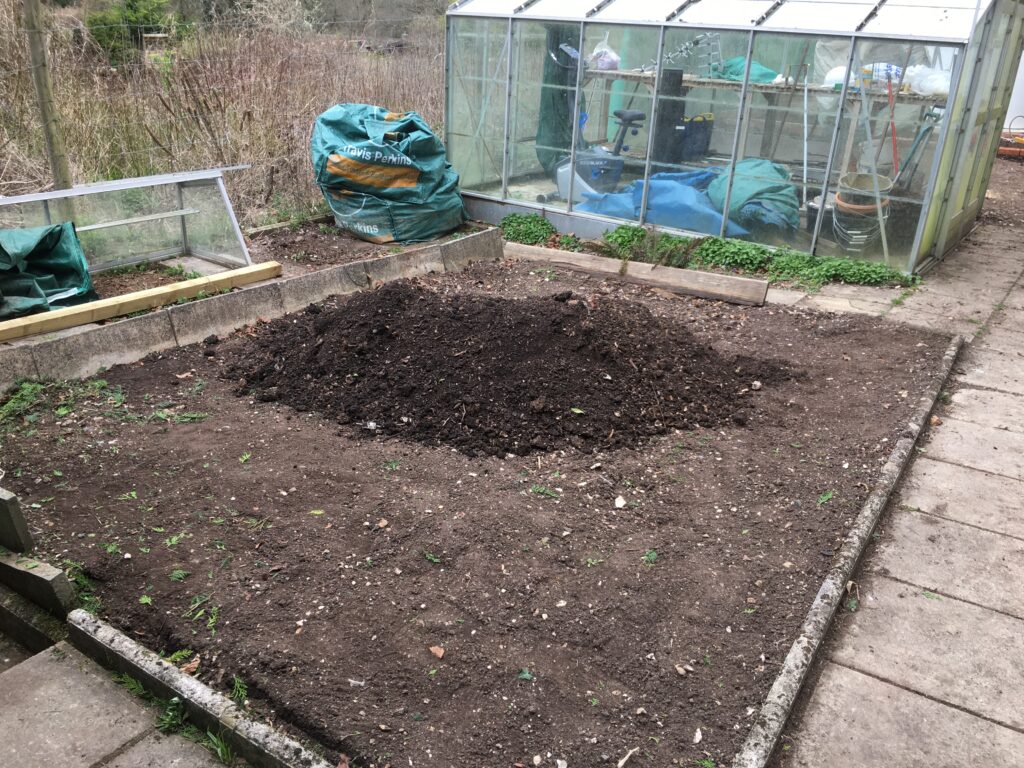
Now was there time for rebuilding inside the dome. I found the control wood board and fitted it back in place. We fed through the electrical wire from outside to both the inside wall and the pier.
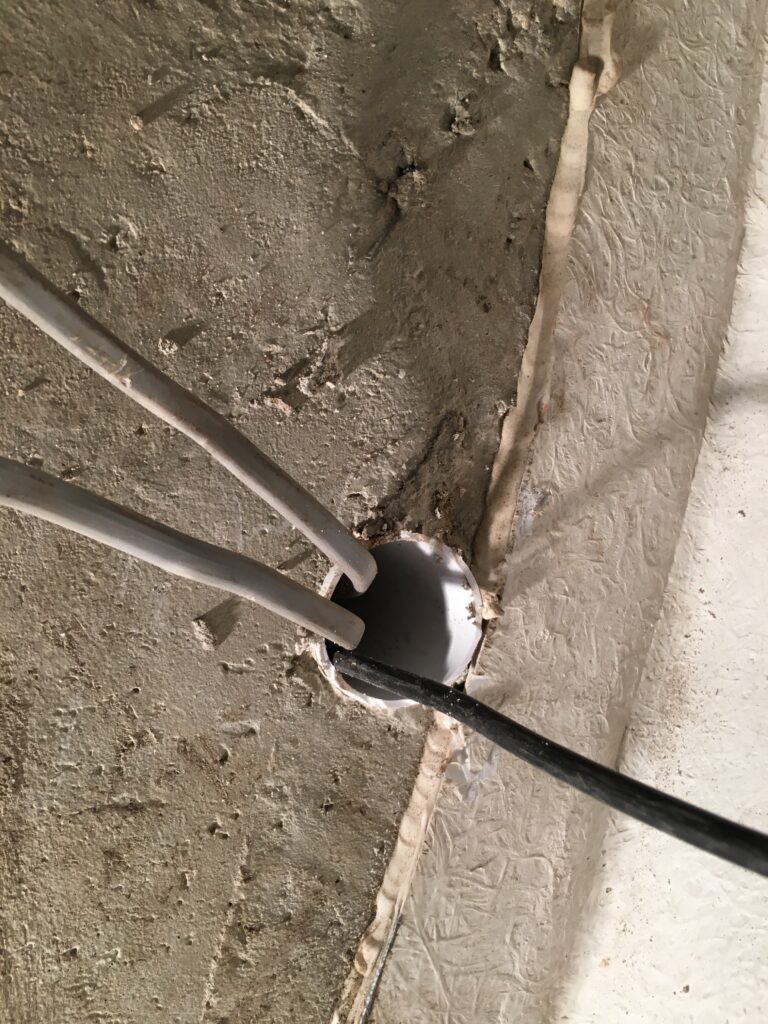
Bob then came round and did the honours of wiring the switches up, thanks Bob!
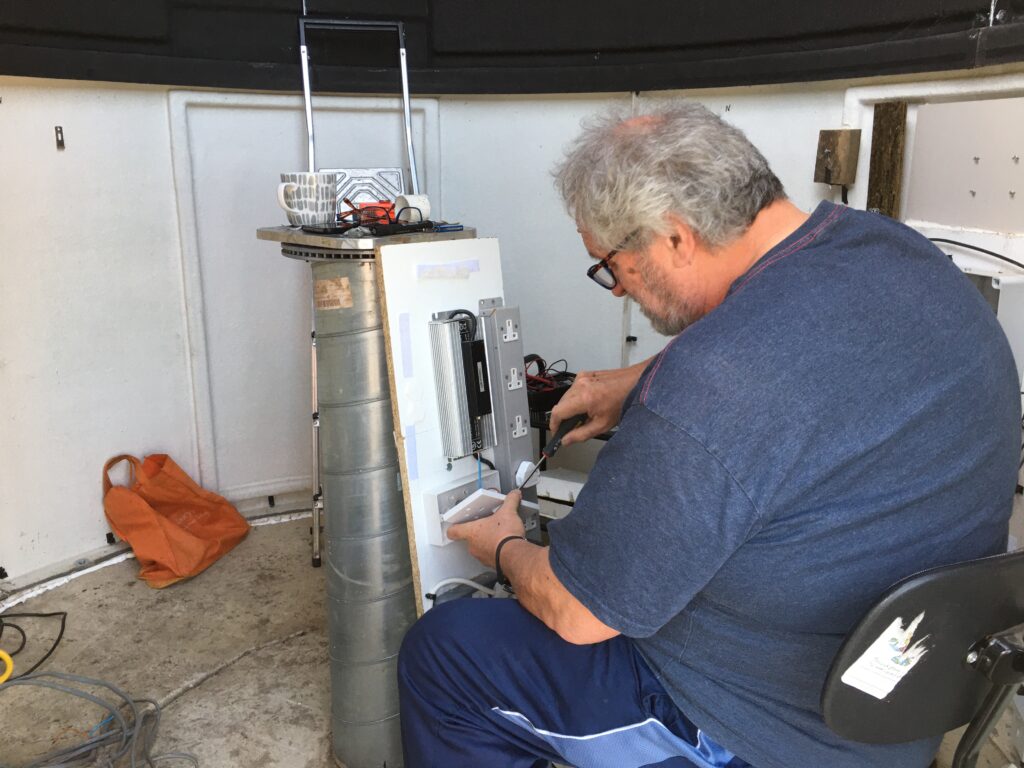
Now it was mount fitting time. 🥳
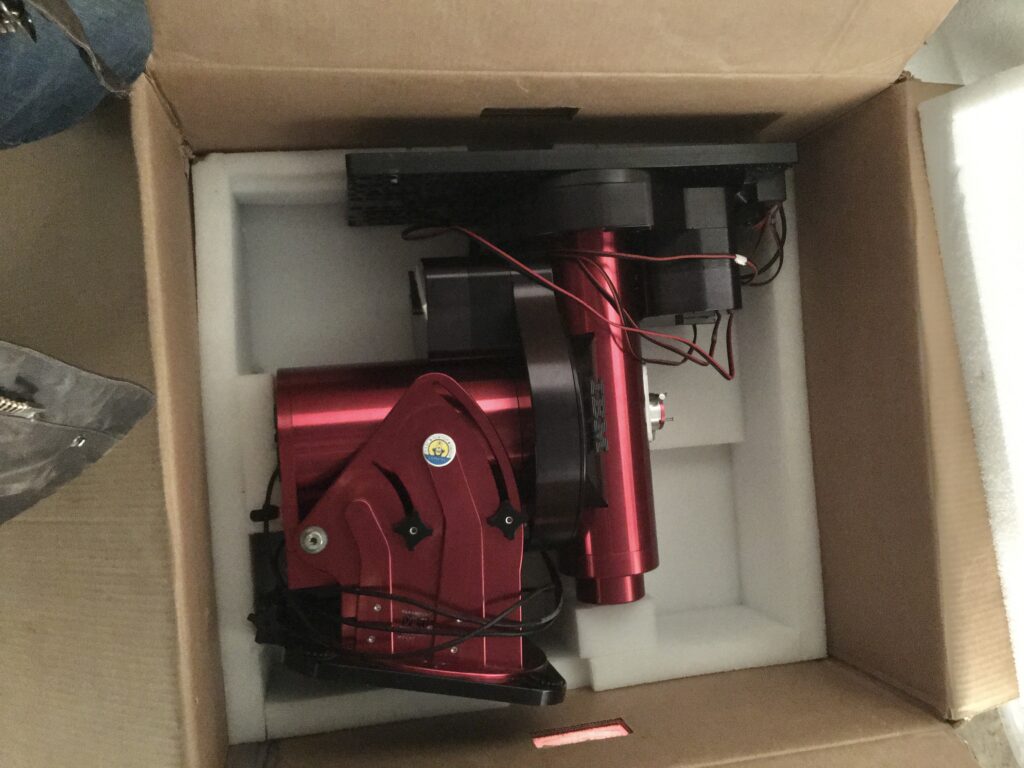
A few days later Luke and I performed the first fit, then I realised we had put it round the wrong way just as my friend Lawerence had done the day before at his 😳 so off it came again and we lifted it back on the right way round. That night was the test of how aligned were we to Polaris. Well it turned out not well enough. 🥺 I was off by about a degree. The MEII was at the end of its travel so I would have to redrill the mounting plate.
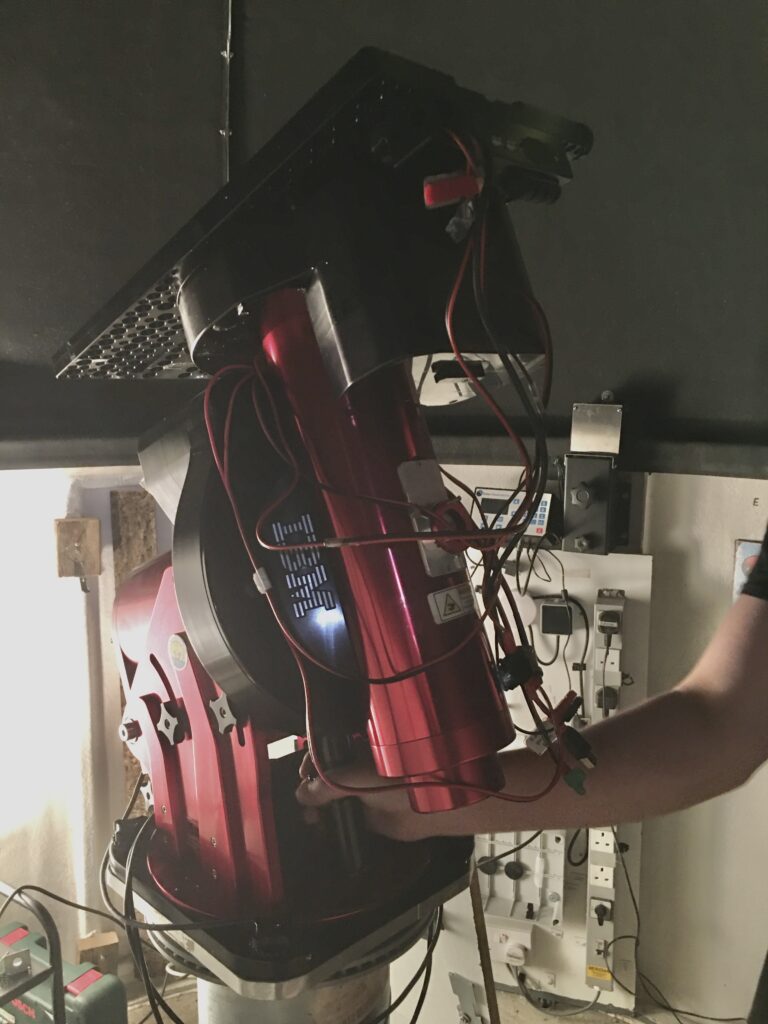
Another day, another task. The mounting plate came off, Bob and I drilled and tapped new holes to match where it needed to be and then refitted to the disc brake on the pier. We then hefted the mount into place and bolted down. That evening a quick test at night and the mount was roughly aligned very easily👍
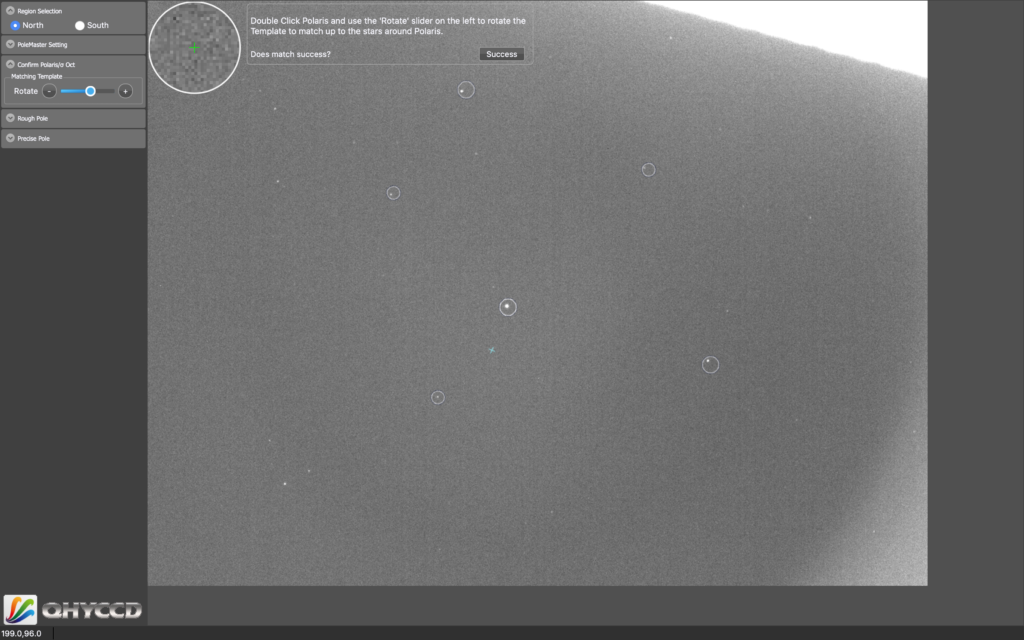
Meanwhile I brought the ethernet cable in from outside through the conduit in the floor and fitted to the internal ethernet plate on the wall.
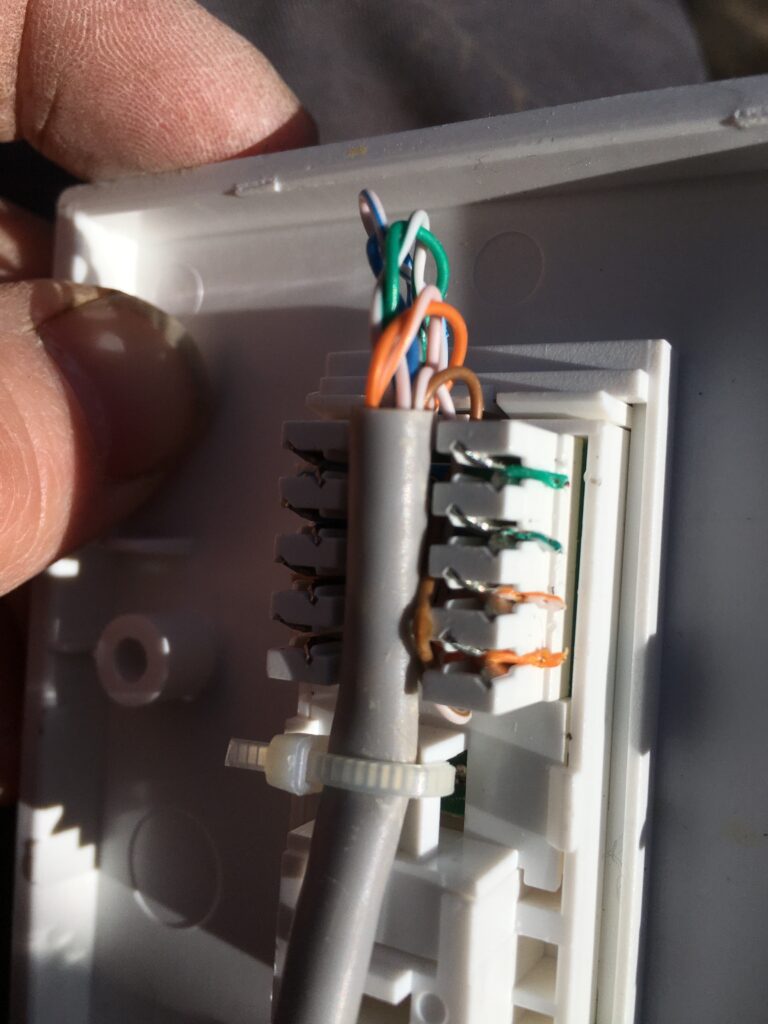
Next we fitted the SQM to the new fence post previously installed.
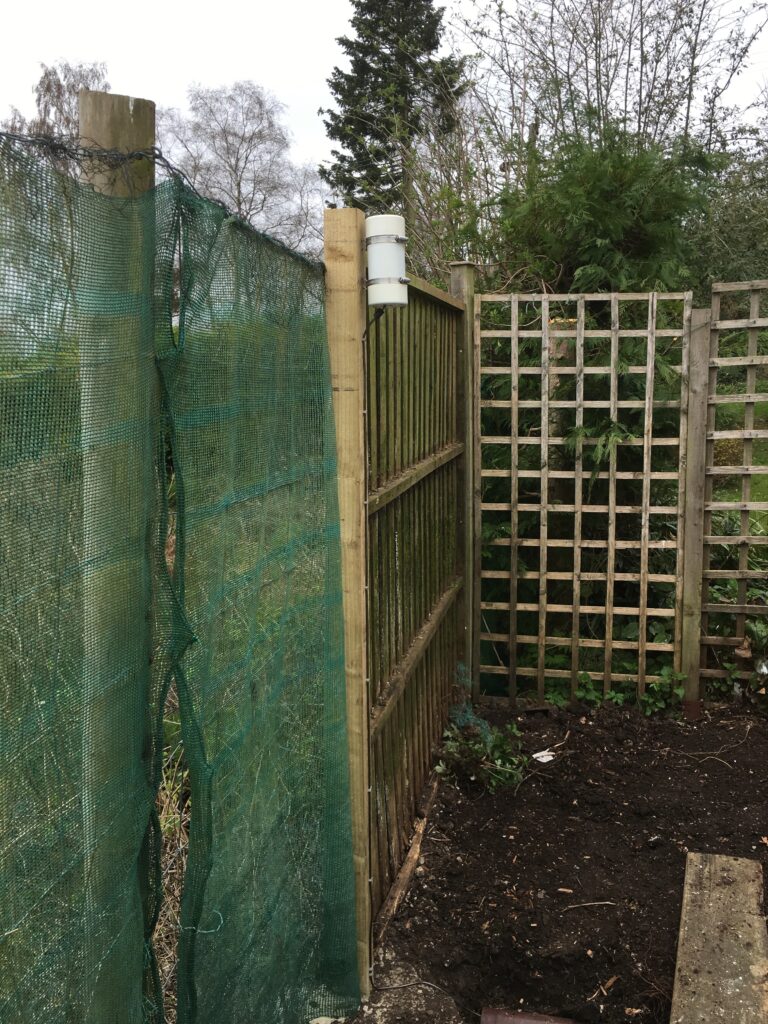
Followed by the All Sky Camera (ASC) and the weather station (AAG).
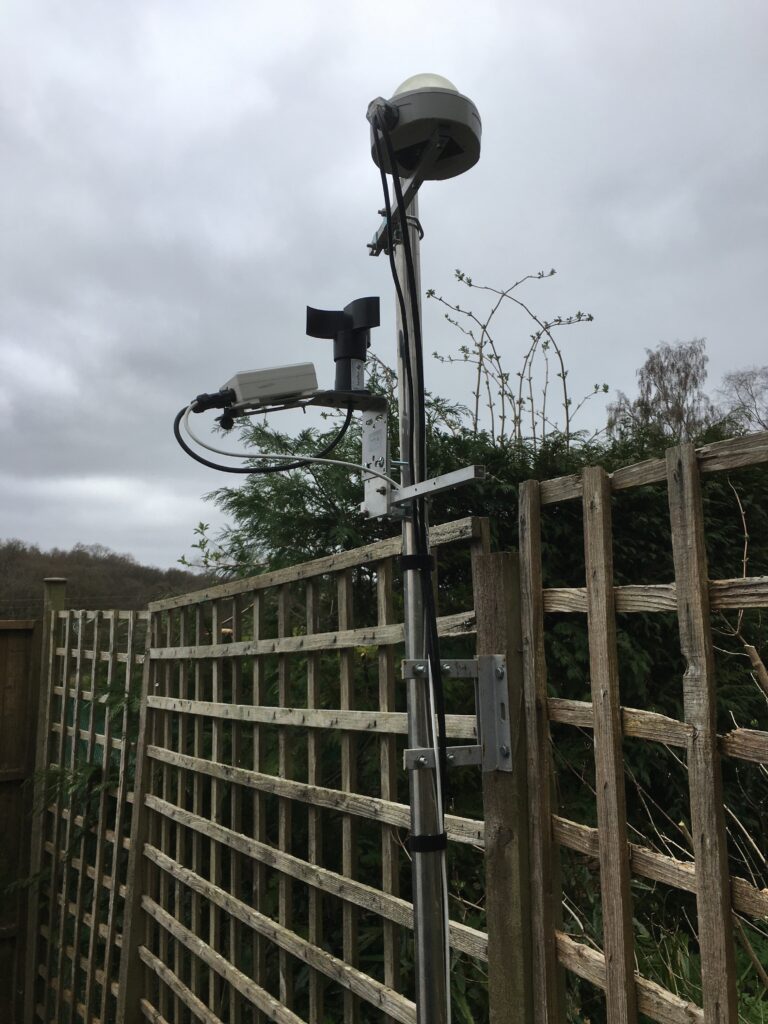
We then dug trenches for the cables and used some spare guttering to cover and backfilled with shingle overlaid with weed matting. Later we will place further weed matting down and add more shingle.
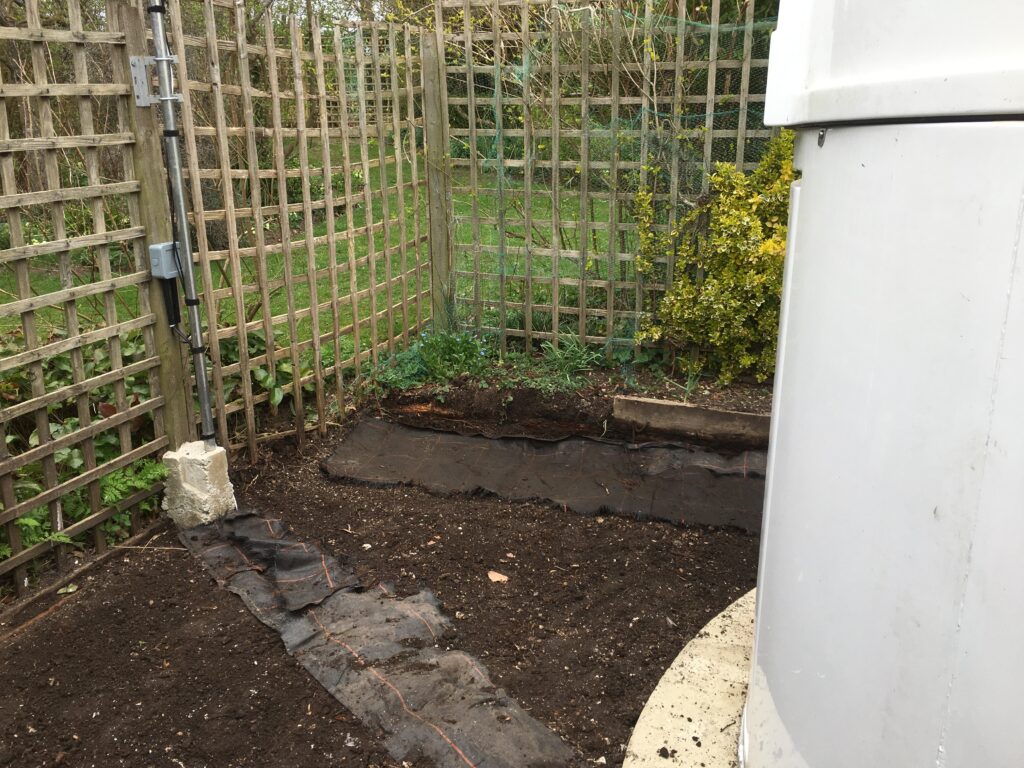
We then dug out some more of the soil to the side of the observatory and placed it at the front with a line of bricks to show where the step for the new patio would go.
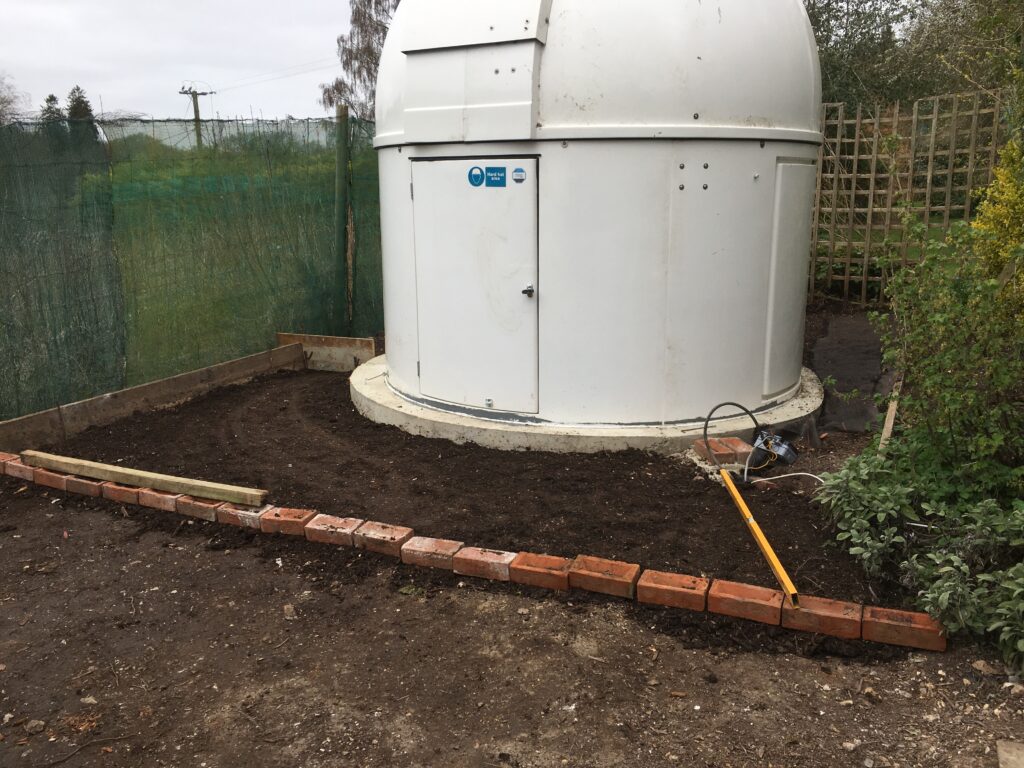
The following day we brought in the 12″ OTA ready for fitting.
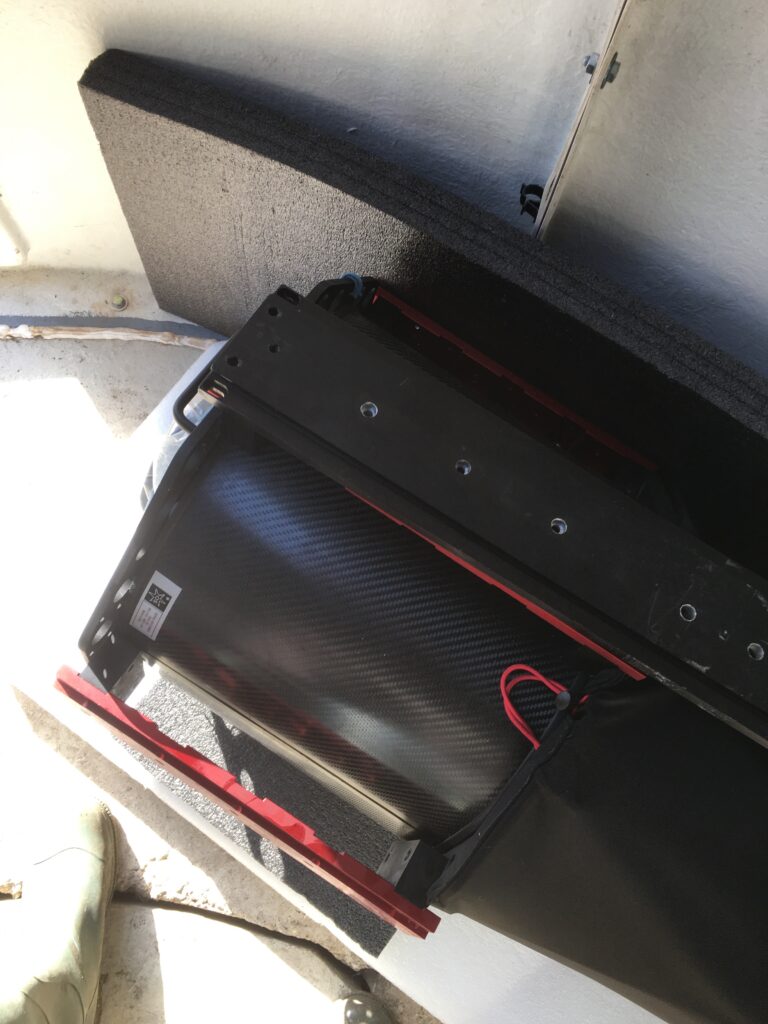
It was the next day after bringing this in that we noticed the water pouring off the inside of the dome and poling on the dome edge. The MEII was stoked and the OTA 😱
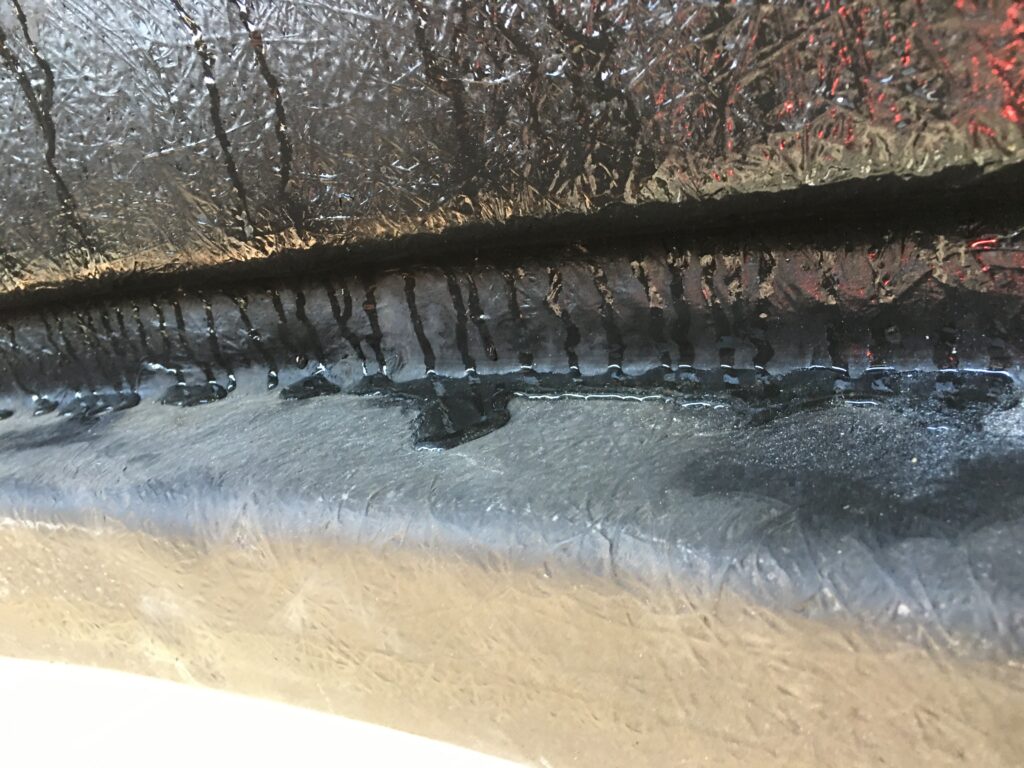
The dehumidifier was retired from the IMT3b cupboard in the workshop and installed! I also put a small heater supplied by Bob in the dome to keep the dew point down. Luke then helped me fit the OTA.

Like with all things the first fitting was wrong, I had forgot to reinstate the long 16″ Meade losmandy plate to allow the OTA to be gripped by all 4 thruster pins on the MEII Versa plate, so off it came again and then we had to find the bag of screws that fitted the taped holes.
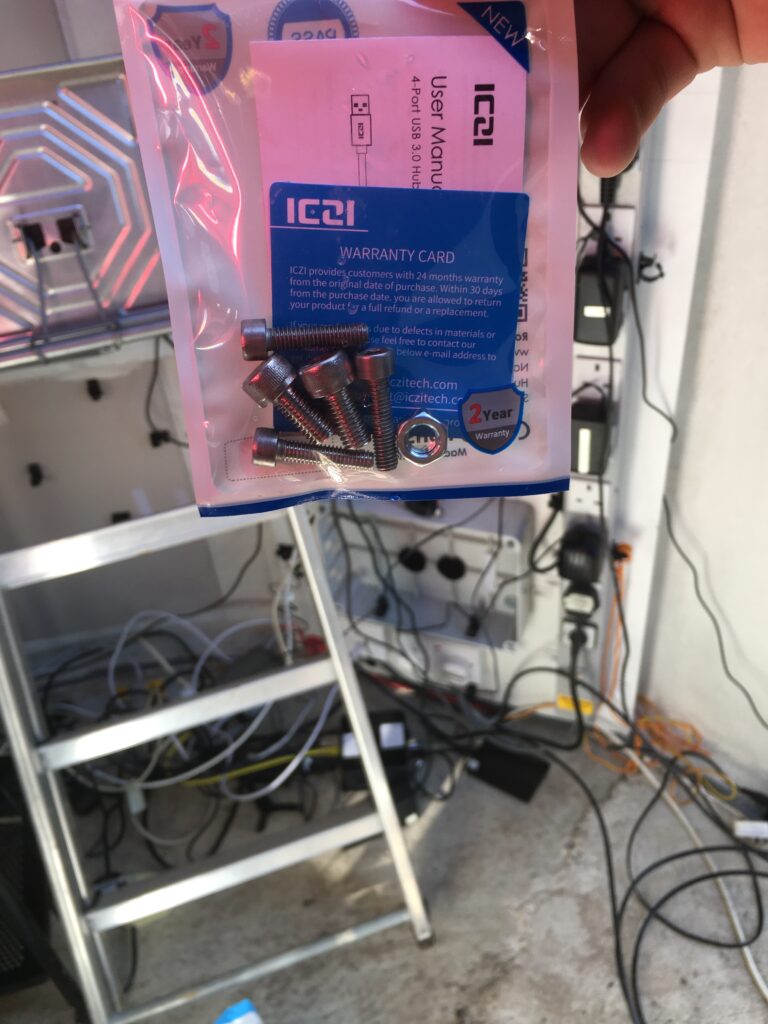
Once found we refitted the OTA, placed the imaging train on, installed the Officina Stellare TC-04 controller for the OTA, fitted the Hi-Tec astro hub and balanced the scope. 28KG of weights were added and the telescope was installed.
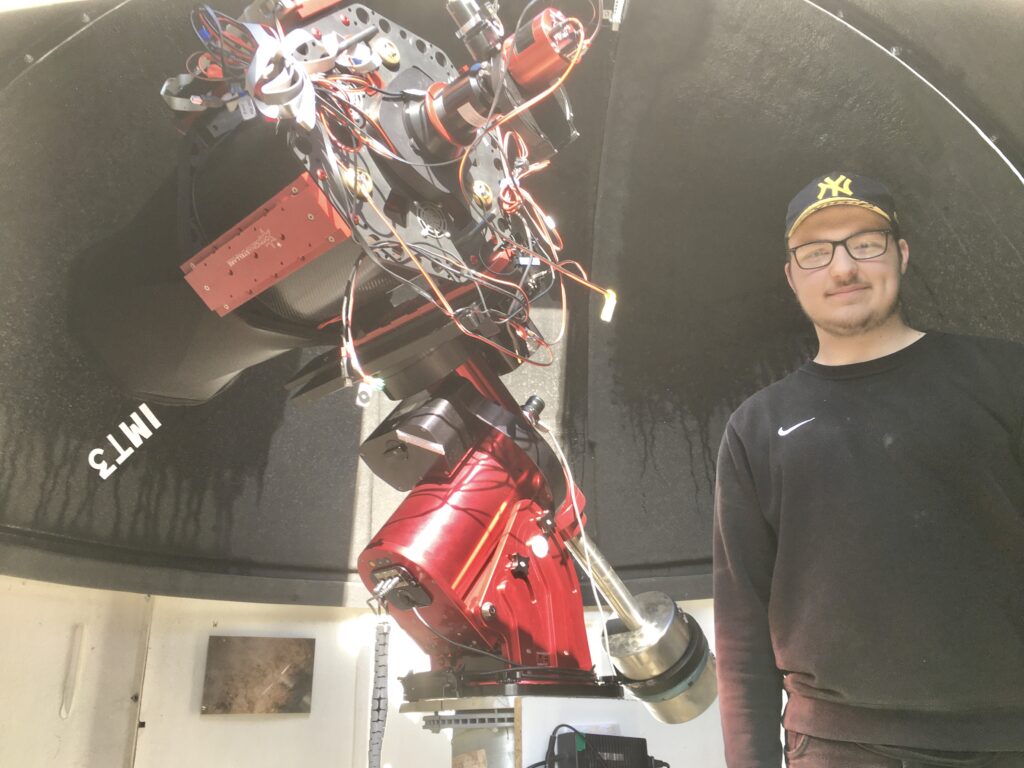
Another day past and my other friend came over and helped install the Nuc, Mac, Raspberry Pi and the Intel Windows PC all to control the dome, telescope and various cameras and weather station devices.
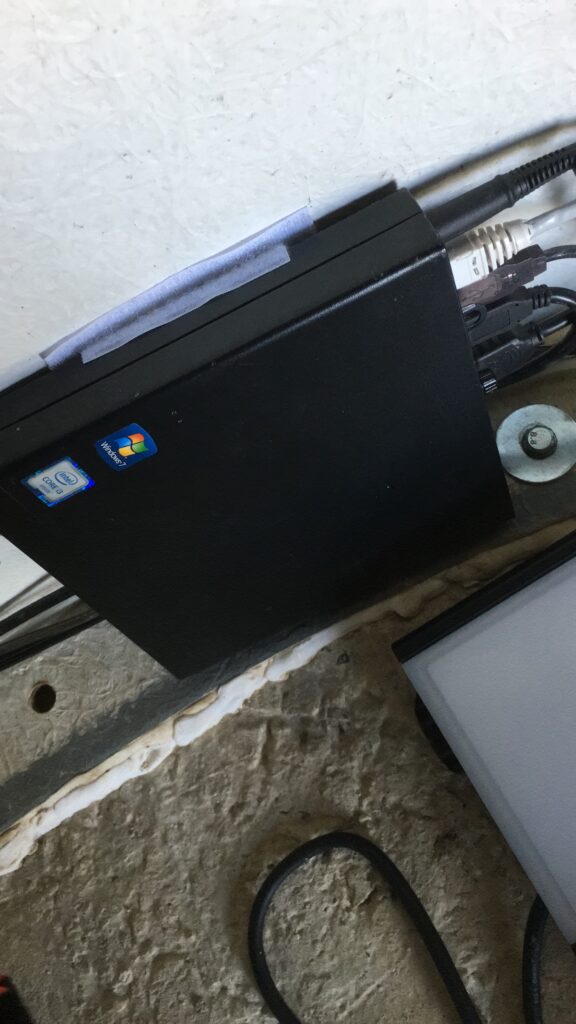
Now the dome could be remotely controlled from outside 😉

Last but not least I installed the power for the mount after heading indoors to find the mount was not connecting.
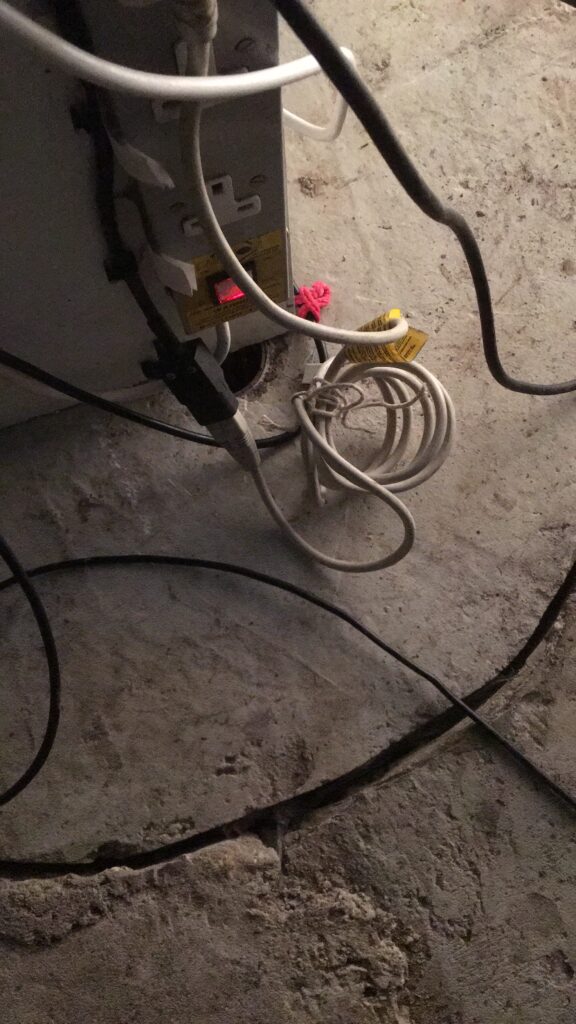
I also installed the cameras for the North East and West positions in the dome to view the OTA in action and one on the end of the 12″ OTA to see where the slit is.
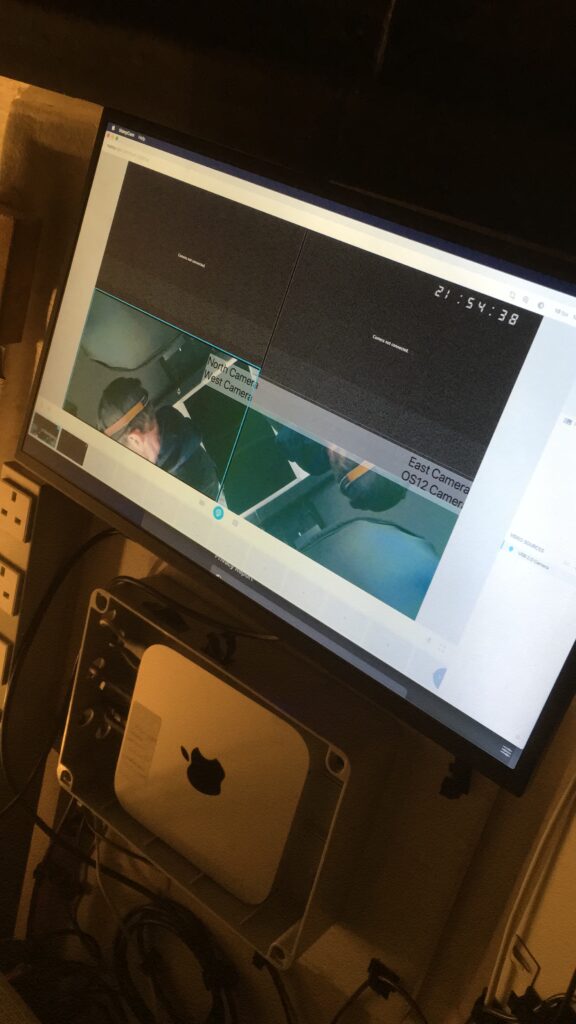
Then this morning I painted around the edge of the dome with fibreglass sealant.
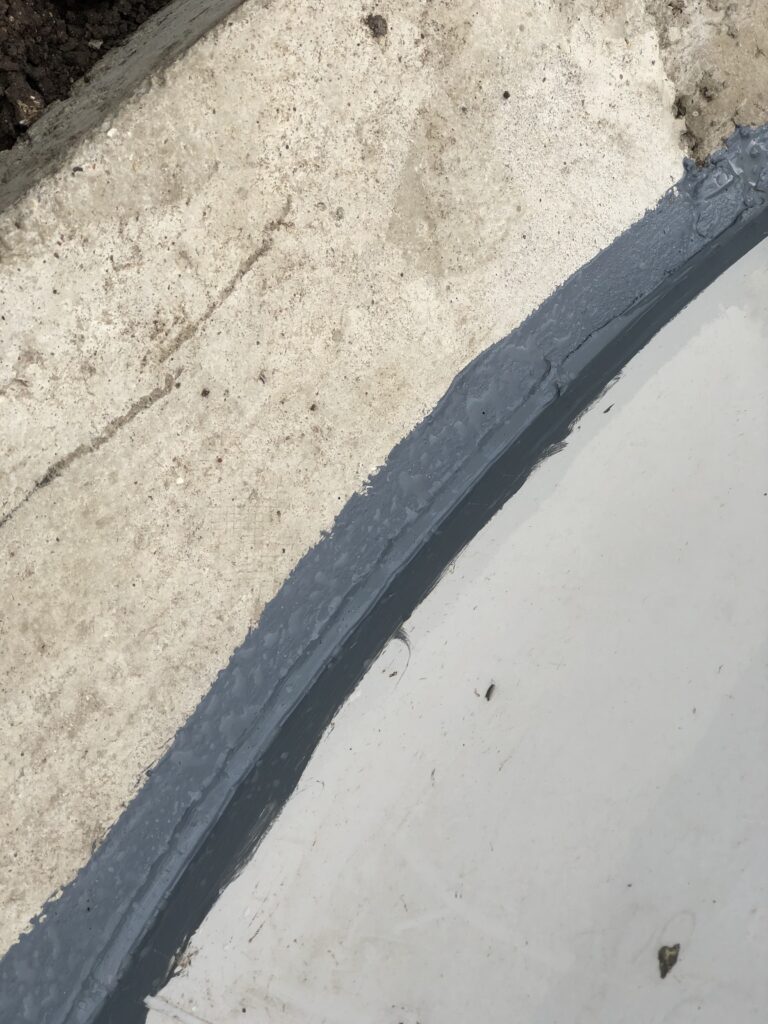
I also noted the dehumidifier was working and nicely draining the water outside the dome.
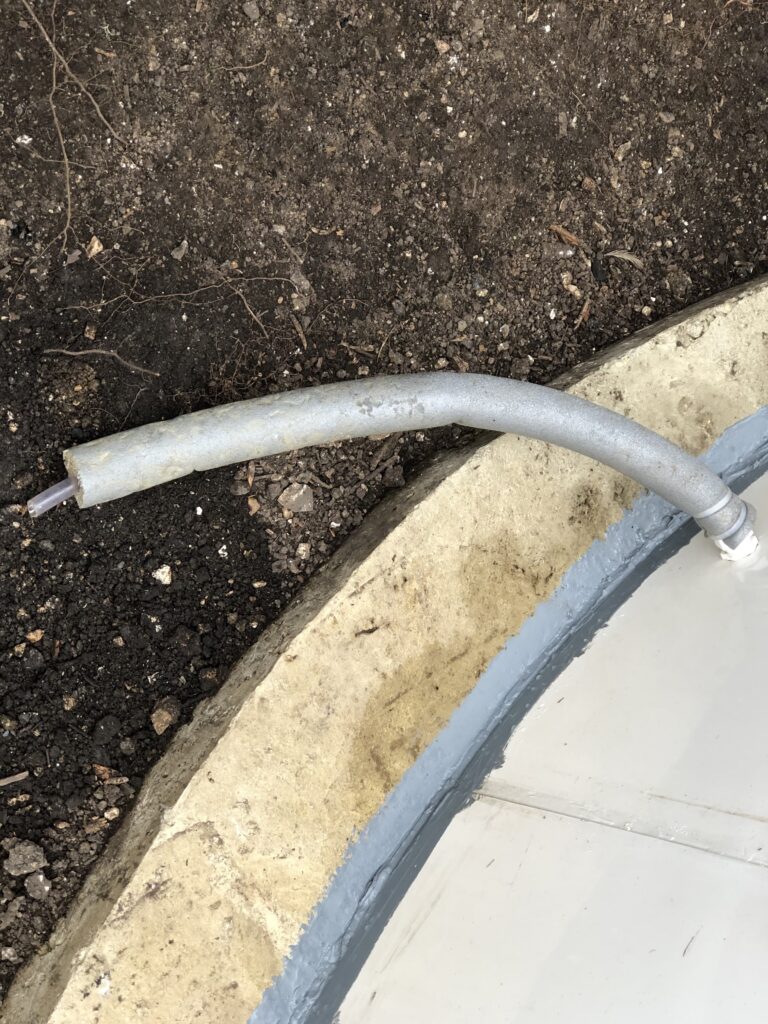
Next up is commissioning the scope to get a T-Point, but here is my very blurry, not entirely correctly pointing first light image of an area of sky in Orion.
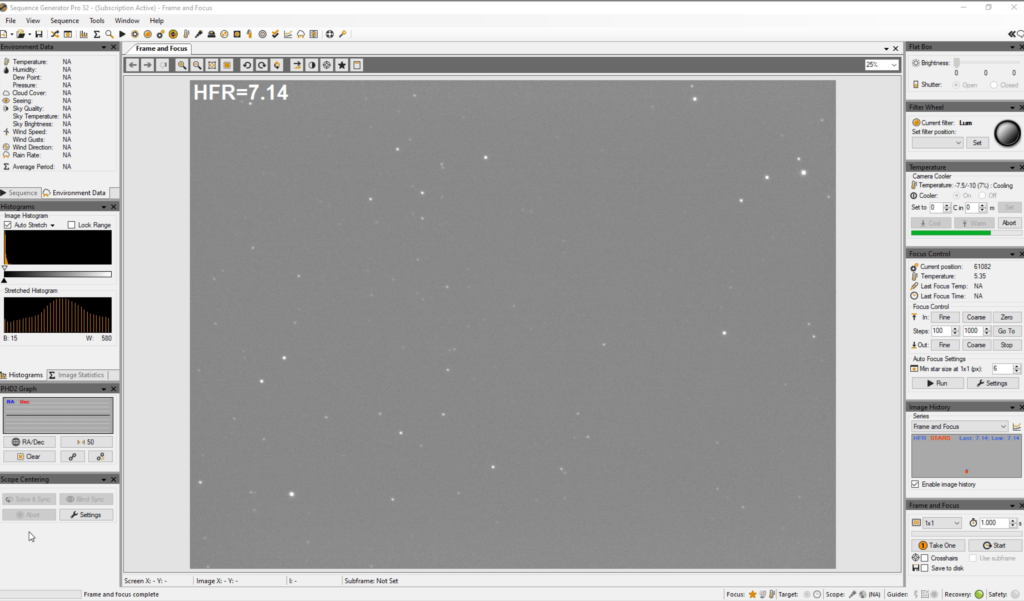
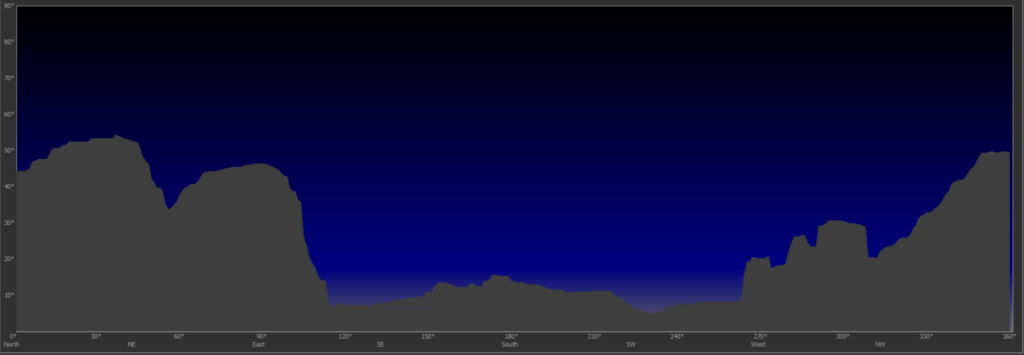
27th March 2021
Today was a big day. Not only was the plan to finish the concreting within the dome, in this case the pier, but also to bolt together the dome itself and get it fitted. The first port of call however, was to grab the newly purchased Land Rover disc brake that had been sprayed with 4 coats of primer by Luke and cut and fit threaded bar to it with washers and nuts to hold it in place inside the concrete pier.

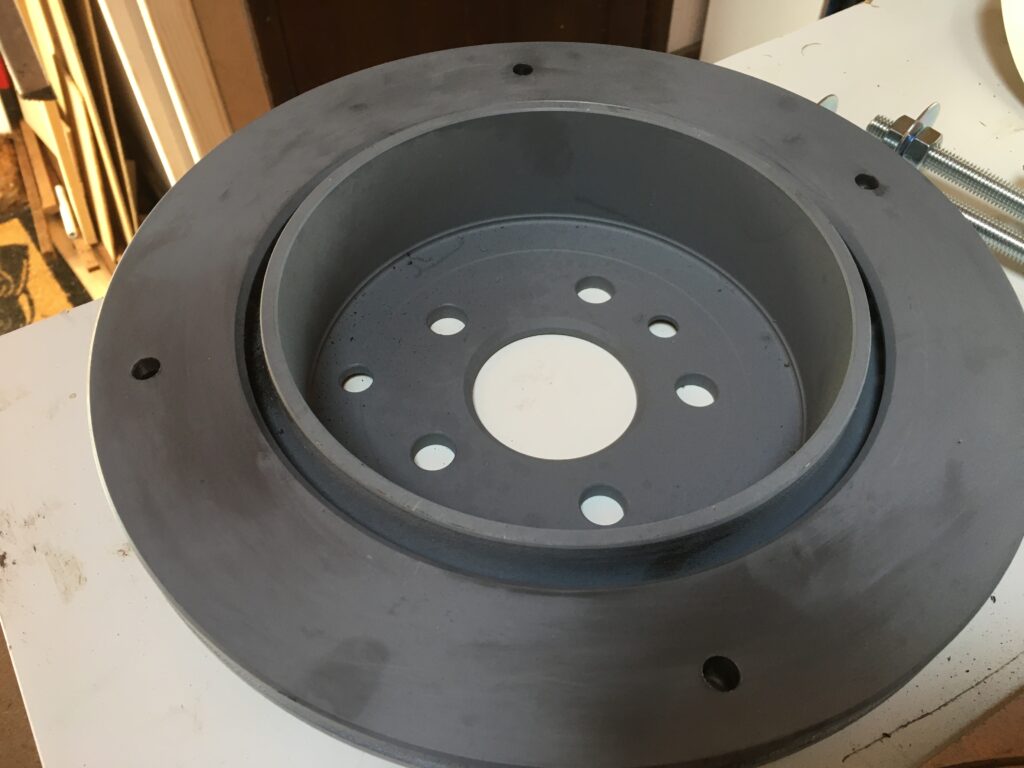
We then drilled and taped holes in the MEII adapter plate that had served mew well sine 2008 when it was installed for the original ME.
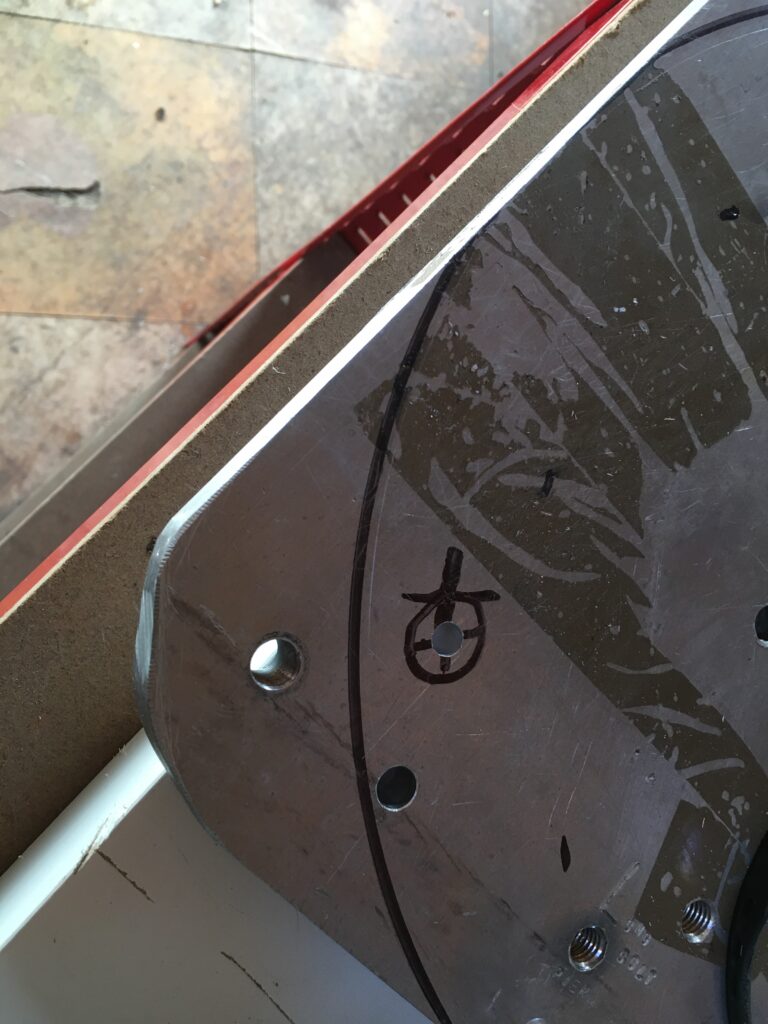
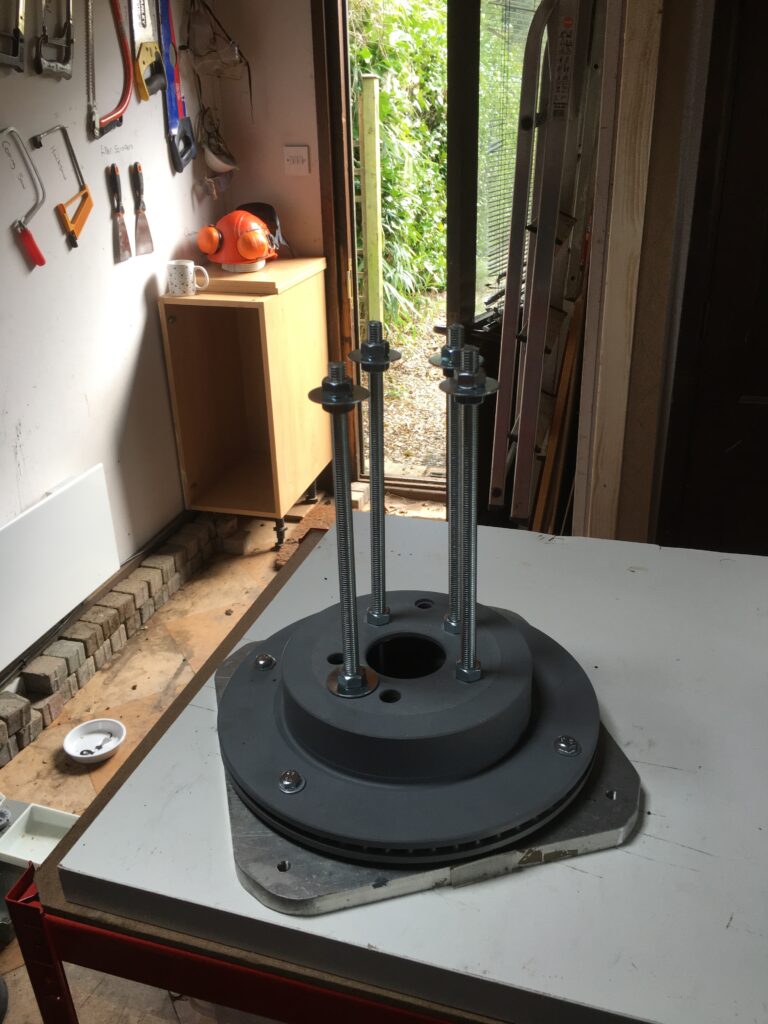
Next we created a former for the slightly wobbly post next to the observatory where the weather station pole was to be installed..

Then we started to concrete the pier. After 1 load the pier was looking a little more full.
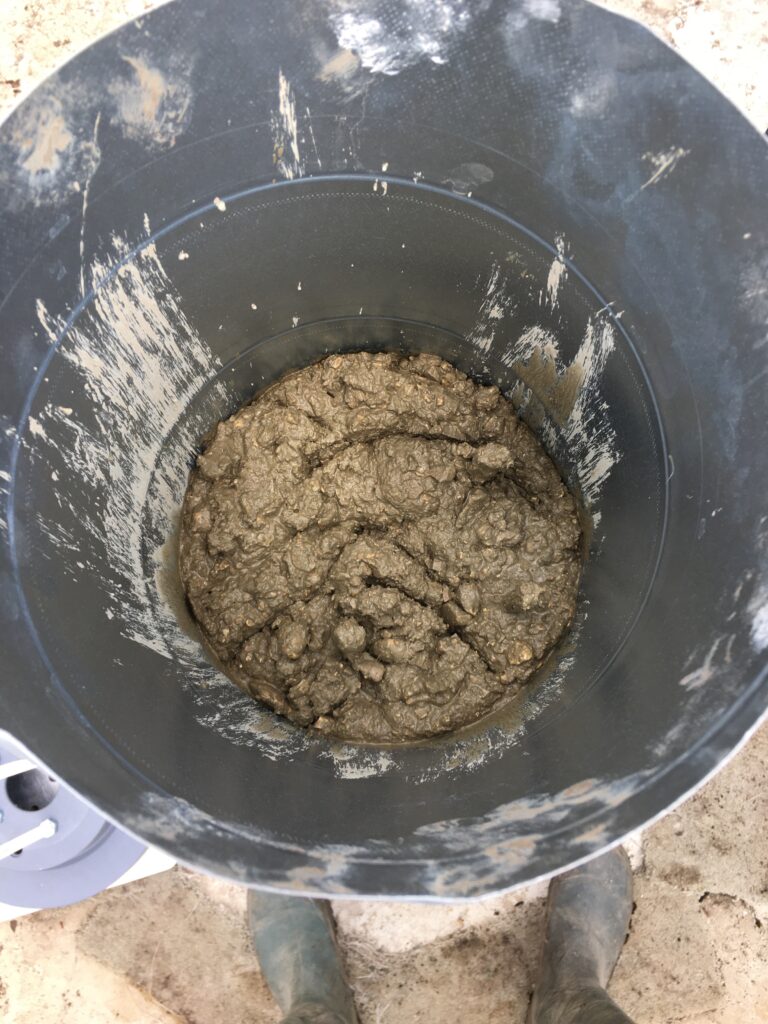
Then after 2 loads it was nearly there. With 1 more bucket of concrete it was ready for the disc brake to be fitted with the MEII adapter plate.
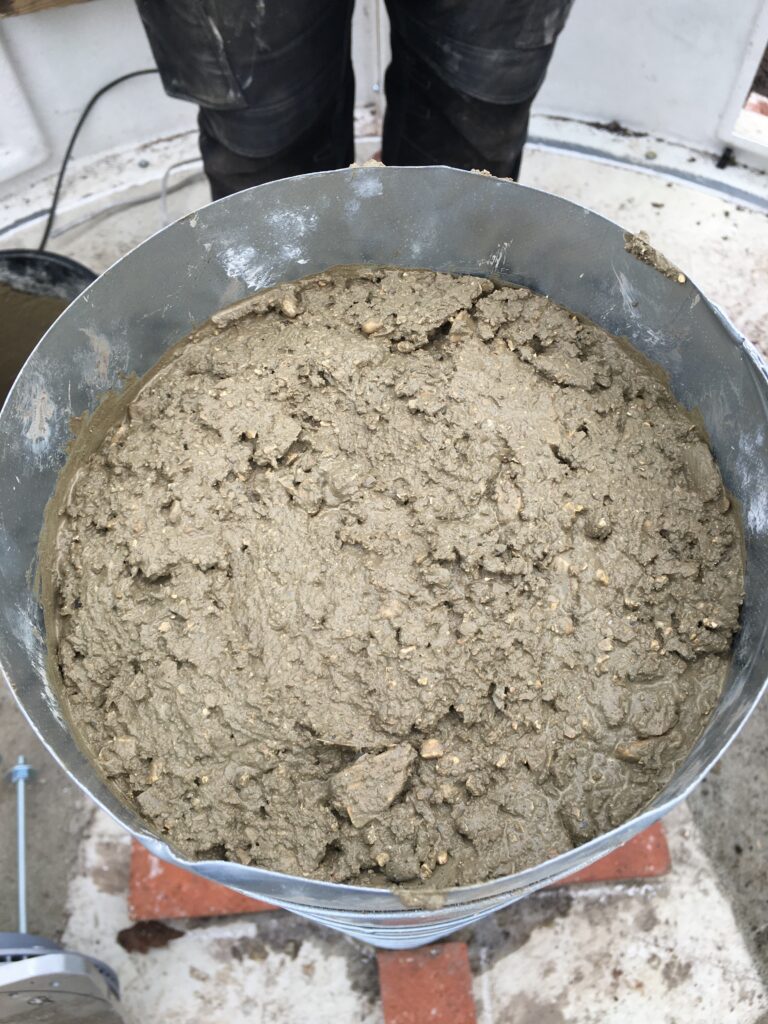
It sunk in very nicely and we aligned just West of North to account for Polaris. We moved the pier slightly to make sure the top plate was level.
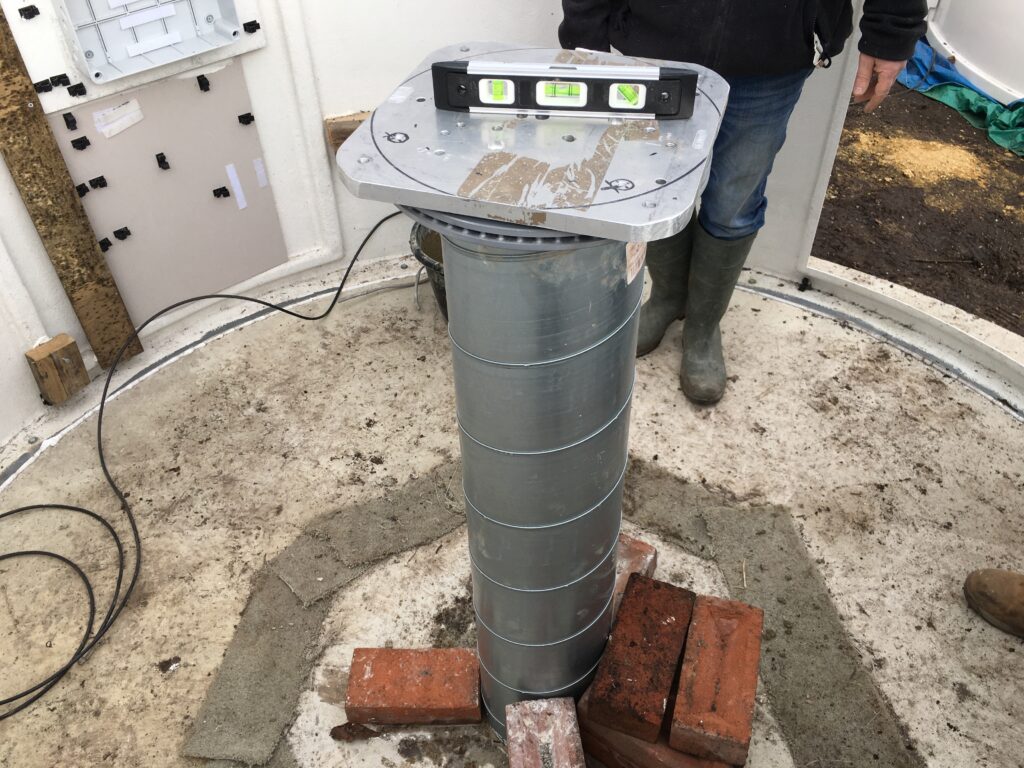
Next the dome segments were prepared in the same fashion as the walls with electric sanding and then using mastic and bolting together.
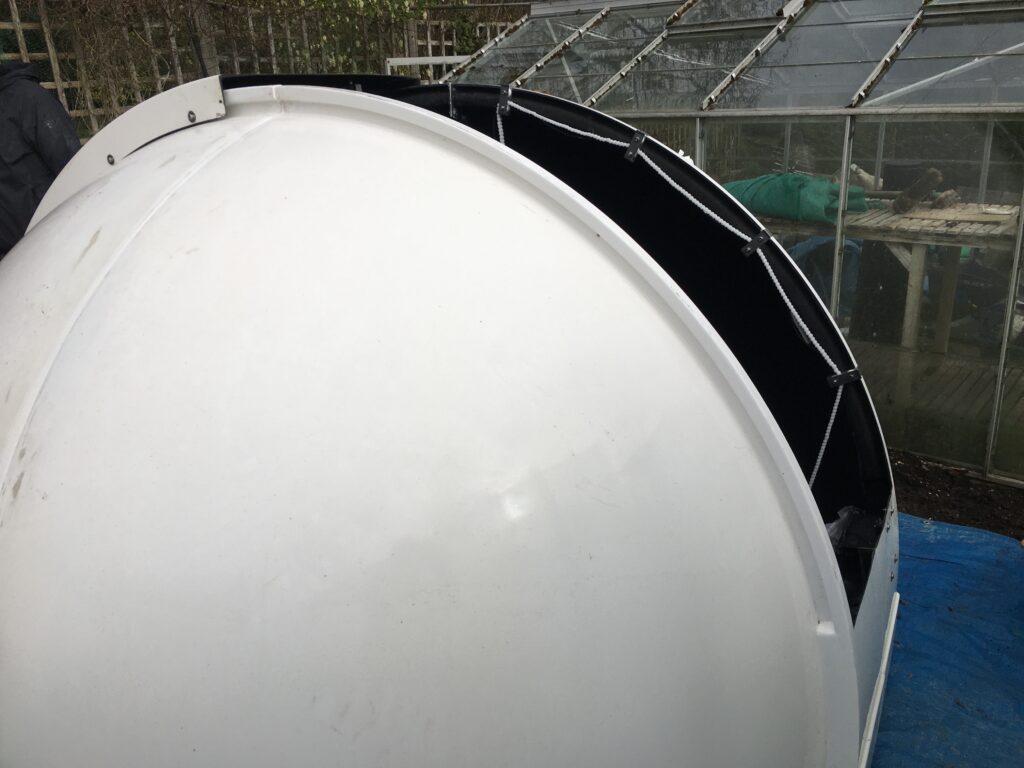
Next Helen, Luke, Ezri and I lifted the dome onto the observatory base. Job complete!
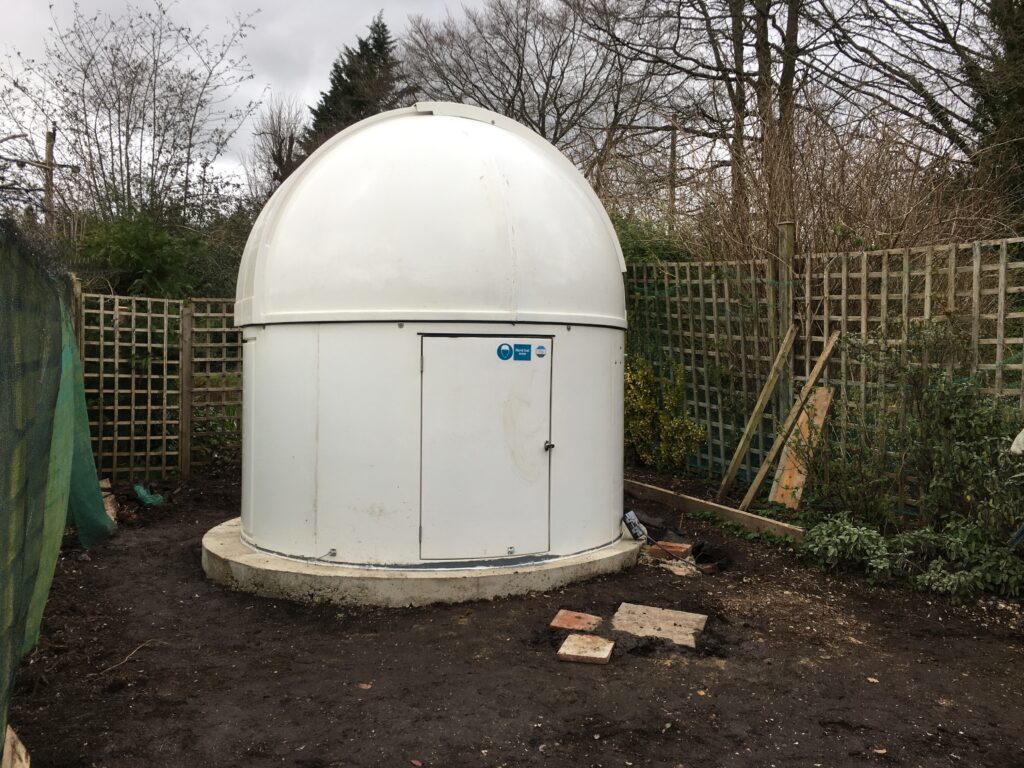
Well almost, well not at all, there is still loads to do. Not only does the dome not rotate fully, due to the walls not being perfectly round (I need to resolve) but also the shutter drive needs fitting and the dome rotation drive and all the electrics and……. well you get the picture 🙂
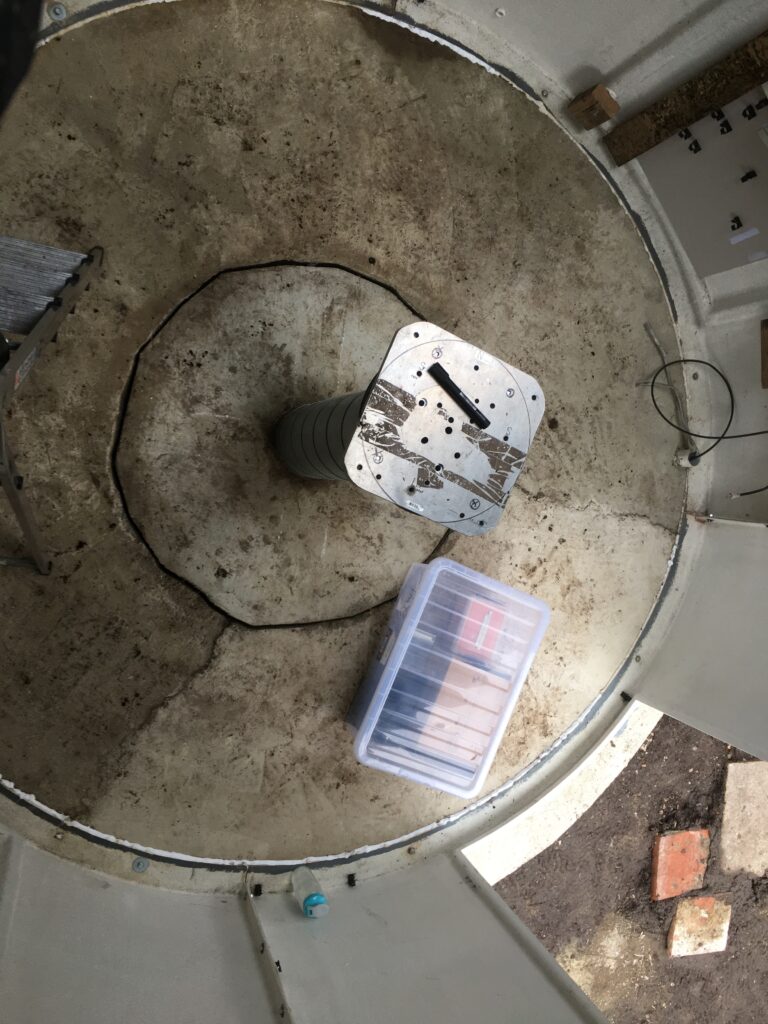
24th March 2021
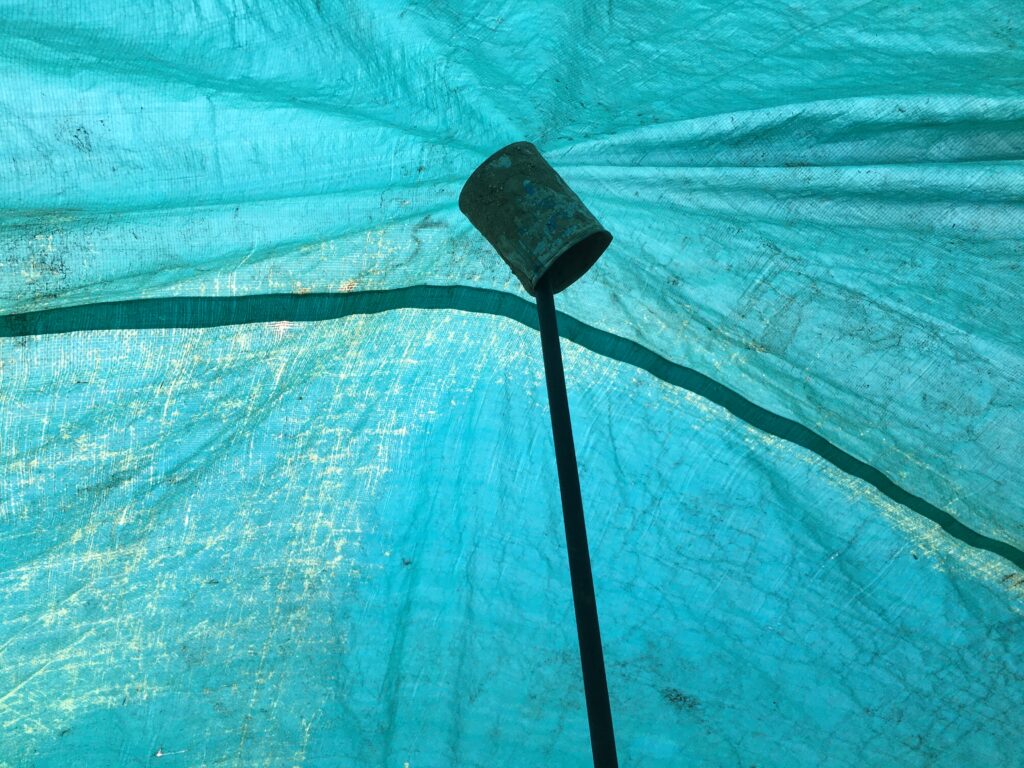
With some wet weather coming in I decided to put a tarpaulin over observatory walls as we had not fitted the dome yet. I used an old pole from a bird feeder not currently in use and the pot used for checking the concrete mix with the slump test.
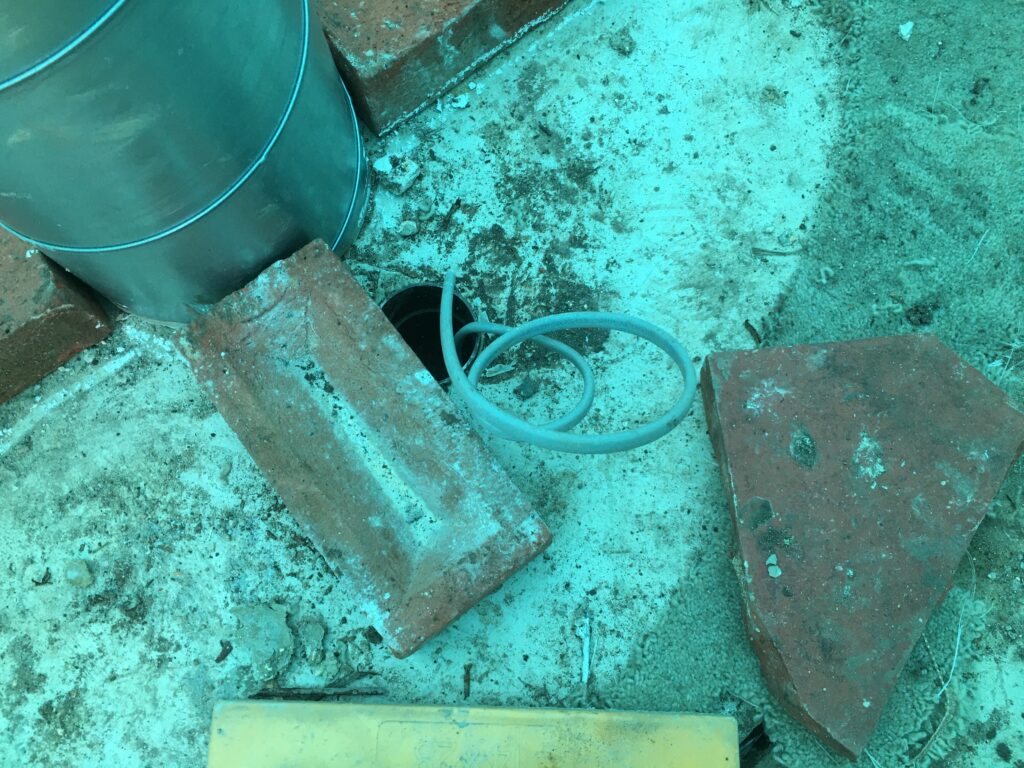
I then fitted the electric cable that would be connected to the outside socket once the dwarf wall was built. I had forgot to run a rope or string through the plastic down pipe but still managed to get it through with a bit of pushing, including the run for the pier and the main outside wall.

22nd March 2021
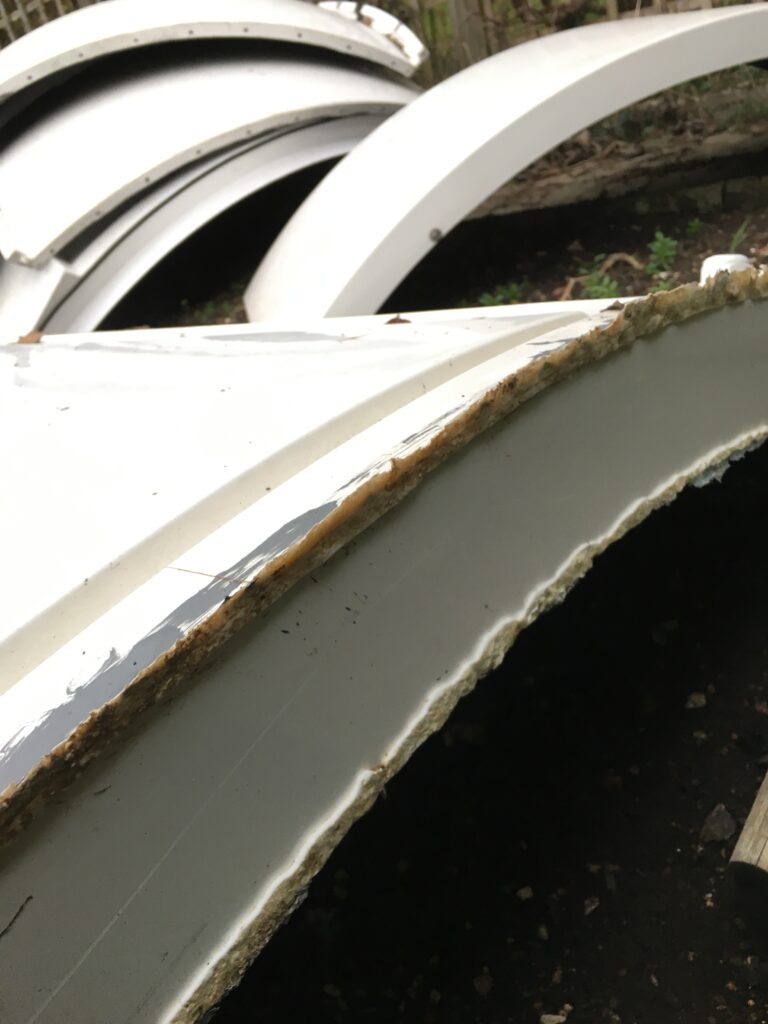
Time to prepare the observatory walls to be fixed to the observatory concrete base. Because this observatory had been in place at my last house, we cut the mastic to separate the panels. This left large amounts of mastic on each of the dome segments and on the observatory wall panels. With the use of Stanley knives and an electric sander the job was much quicker than using sandpaper by hand. It still too several hours though.

Then it was a case of placing the wall segments down and biting each pair together running a bead of mastic down each. Now with 2 pairs done, we lined the dome up so that it was at best equidistant from the pier. I then drew a chalk line around the edge, drilled pilot holder where the dome walls would attach to the concrete and then we unbolted and moved the dome walls again.
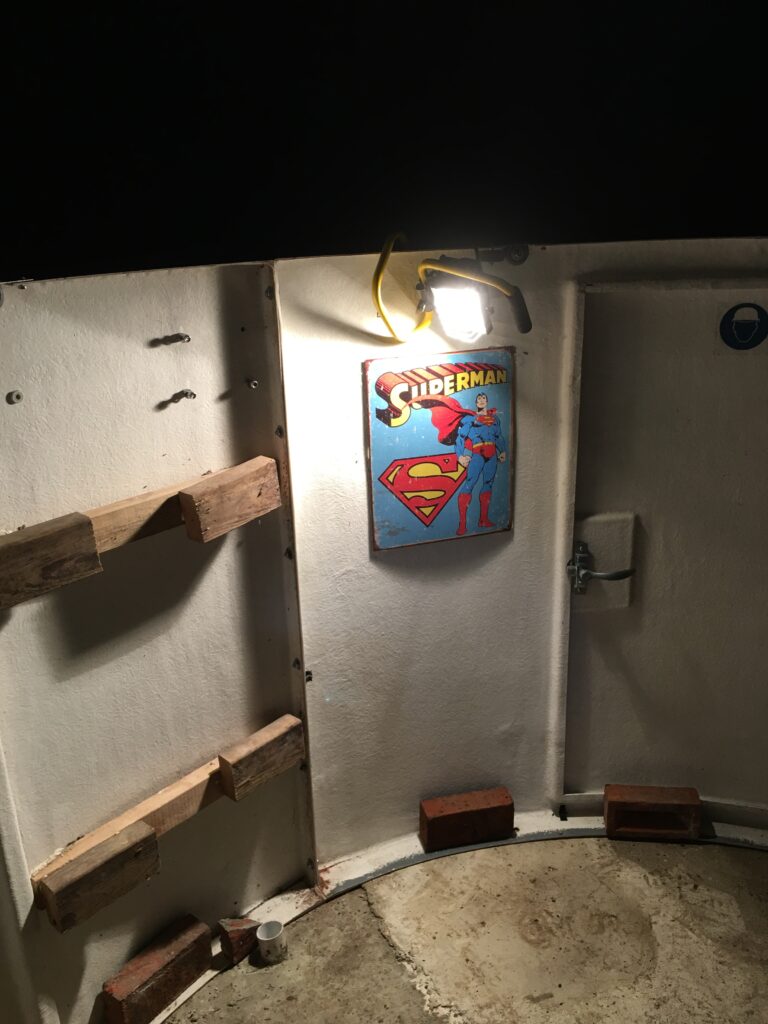
Luke then had the fun of using the SRS drill which is the only drill to get through concrete to the depth needed for the long M8 bolts. Once all were drilled and the anchor bolt sheaths were hammered in, we ran another bead of mastic around the base and then placed the dom walls in their final positions. We then bolted them to the floor and the 2 pairs back to each other with more mastic here too.

By this time it was a getting fairly dark so we tightened up the final set of bolts and called it a night. Luke then spent some time raking the mounds of soil from around the sides and rear of the observatory that use to make up the vegetable patch. The lay of the land means we need to build up one end of the observatory land surrounding the dome by about 6 inches to allow for a flat patio later in the summer.

Finally the day after this I came out early in the morning and ran 2 tubes of silicon mastic around the outside of the observatory so that when I pain on the Rust-Oleum fibreglass Fillcoat waterproofing sealer that it would smoothly go over and not disappear in some of the larger gaps caused by less than professional concrete laying.
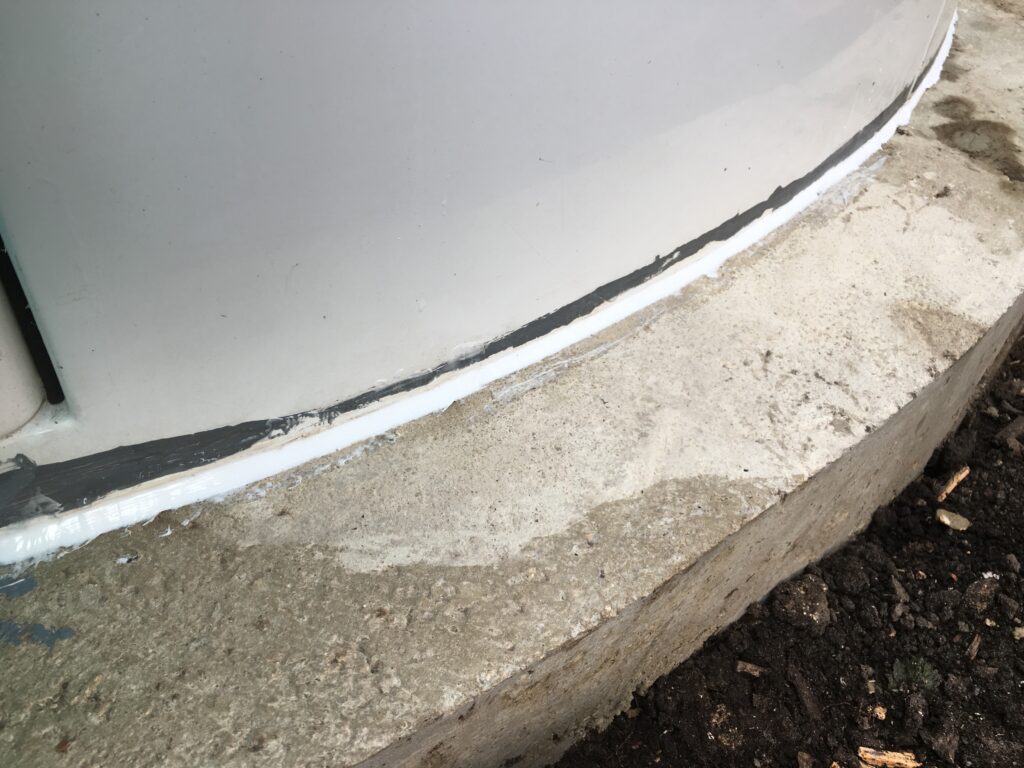
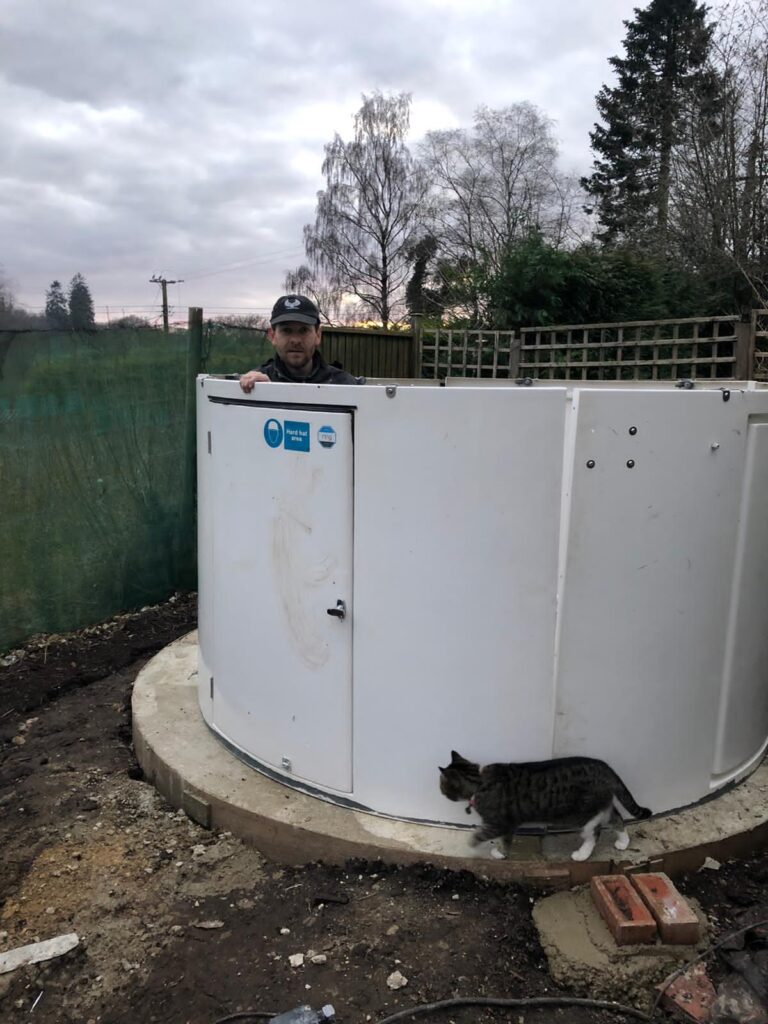
20th March 2021
Another weekend, another day of concreting. Once done, there are 3 patios to fit, another observatory, rolloff, a Summerhouse and a workshop! That’s a lot of concrete and cement mixing!!! So you guessed it, more ballast!
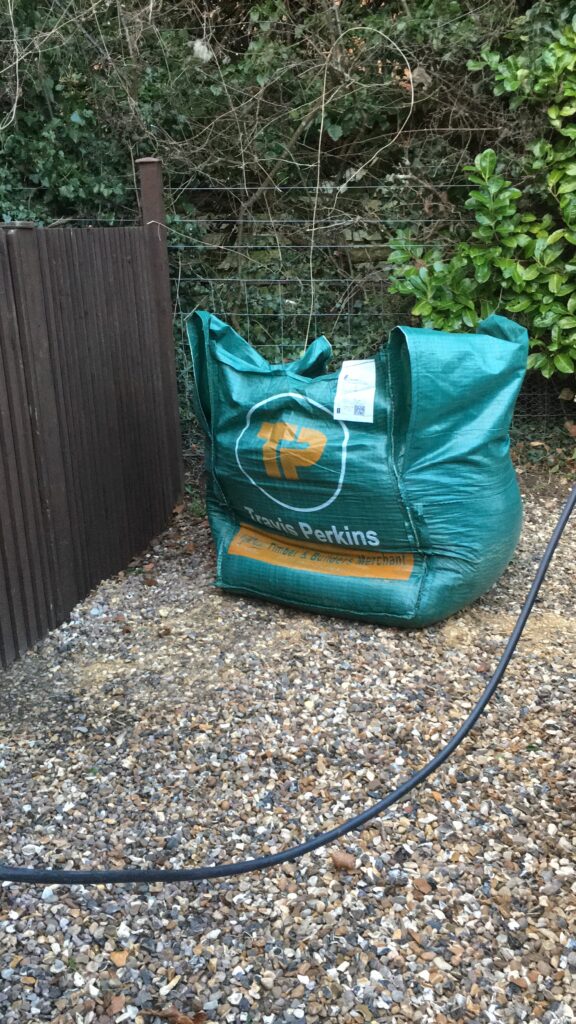
Similar time as before 8:41 am and Luke and I removed the carpet from the old concreting which separated the block from the observatory base. This was carpet and plastic. We worked out that removing it was hard so the next time we would remove after 4-8 hours, time for the concrete to set and not slump but not so hard you have to use a cold chisel and lump hammer to remove.
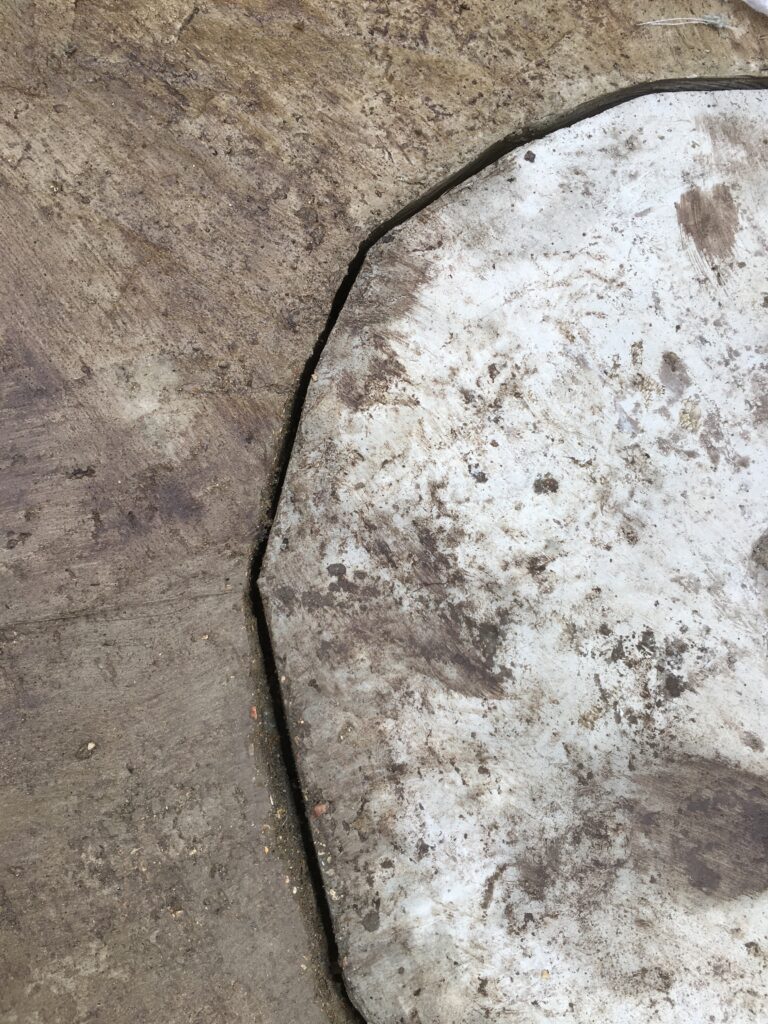
Given the depth of the South side of the observatory base, we decided to place a lot of flint material on the base, this again would reduce the need for so much concrete. Another slump test and another successful mix.
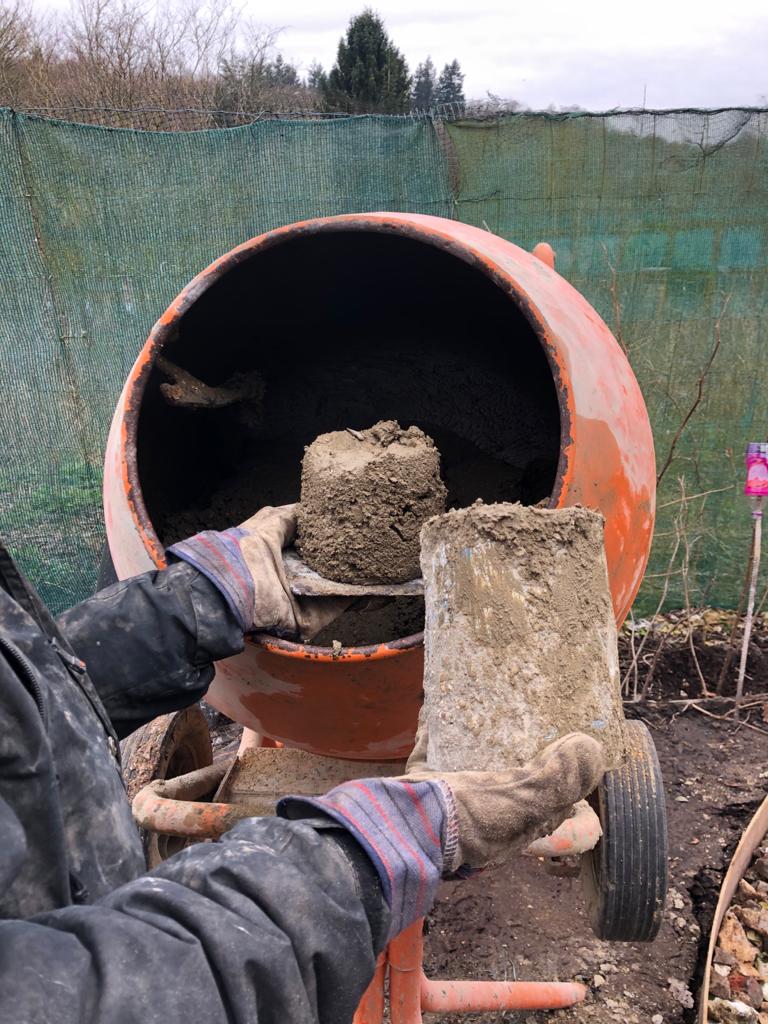
By 10:40, some 2 hours later we were done. The join was a bit rough but we could chisel that down later if needed.
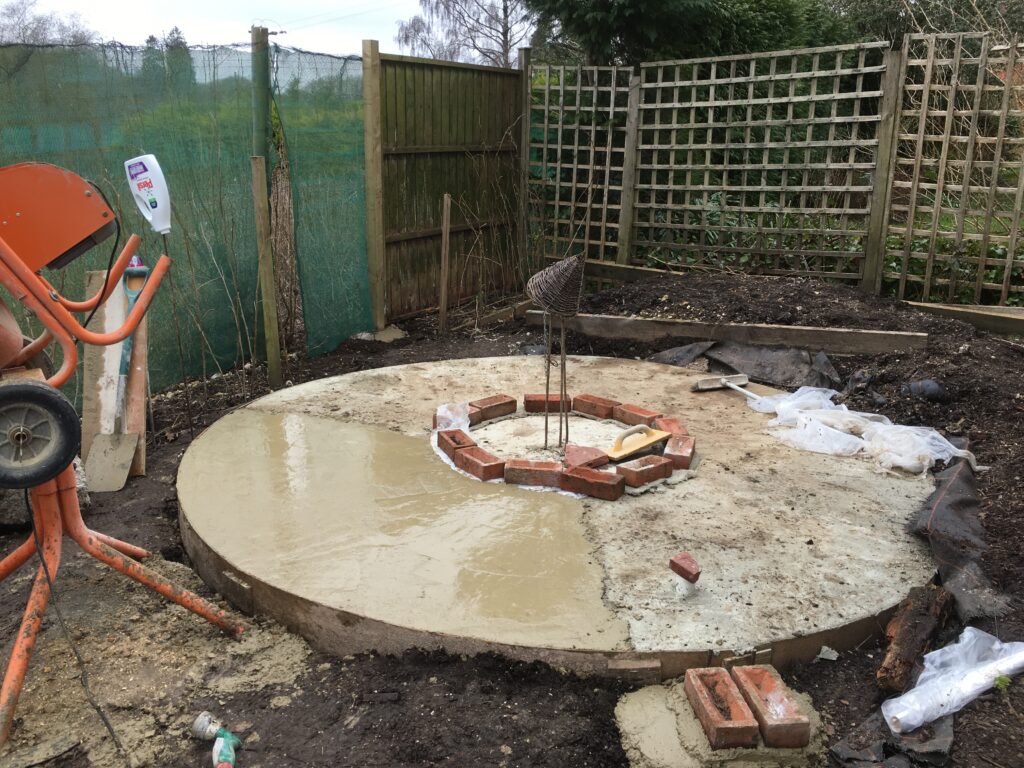
The spare cement was used to concrete in a manhole cover that was not concerted in by my house, also I used some to start the base of the small brick pillar nicknames Fraggle Rock by Gingergeek and 2 bricks for the electric to be fixed onto later.
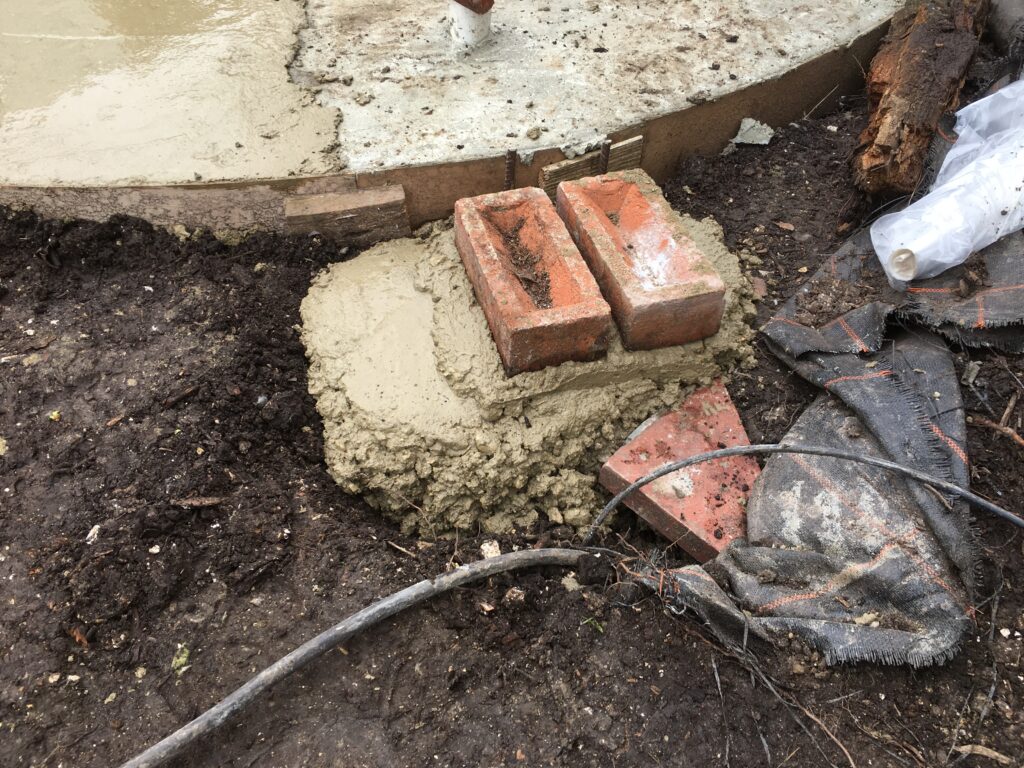
Just before evening set in I went to inspect the concrete and cover before it got cold, I noticed a bird had clearly walked across it, that will now be some heavy bird I guess 🙂
